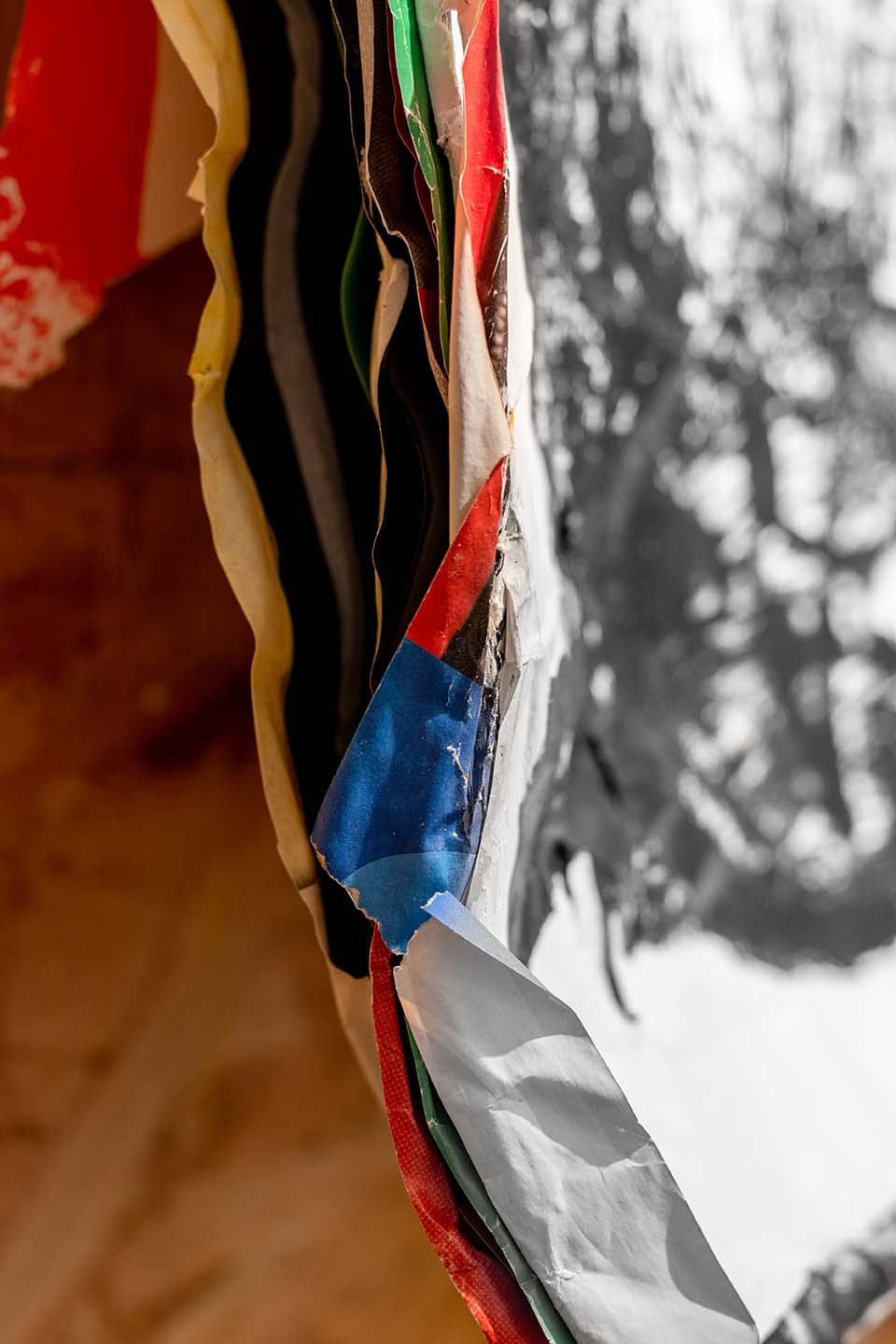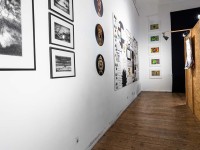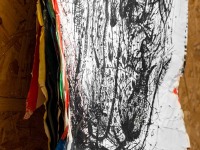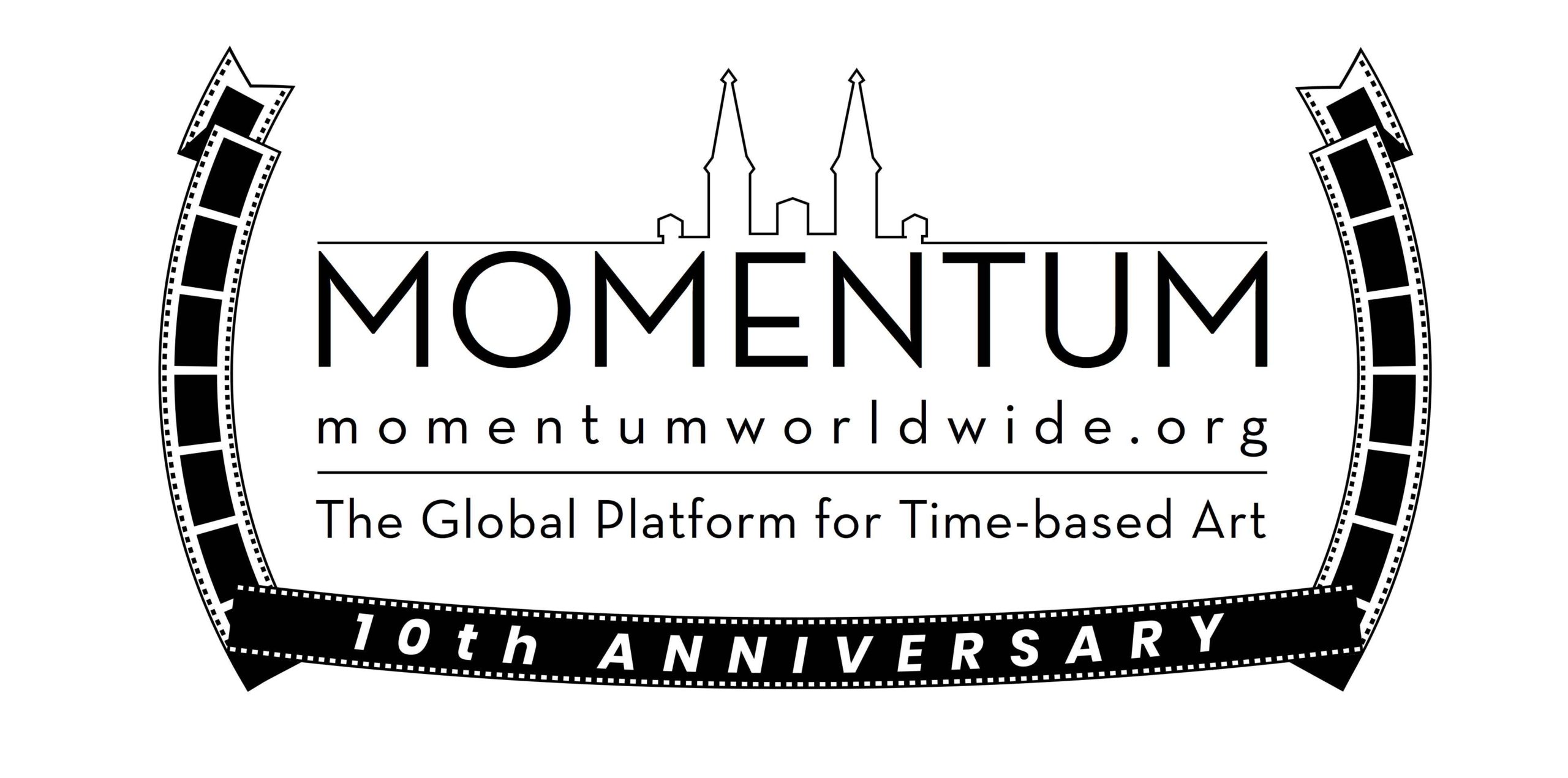
The Conclusion of MOMENTUM’s 10th Anniversary Program
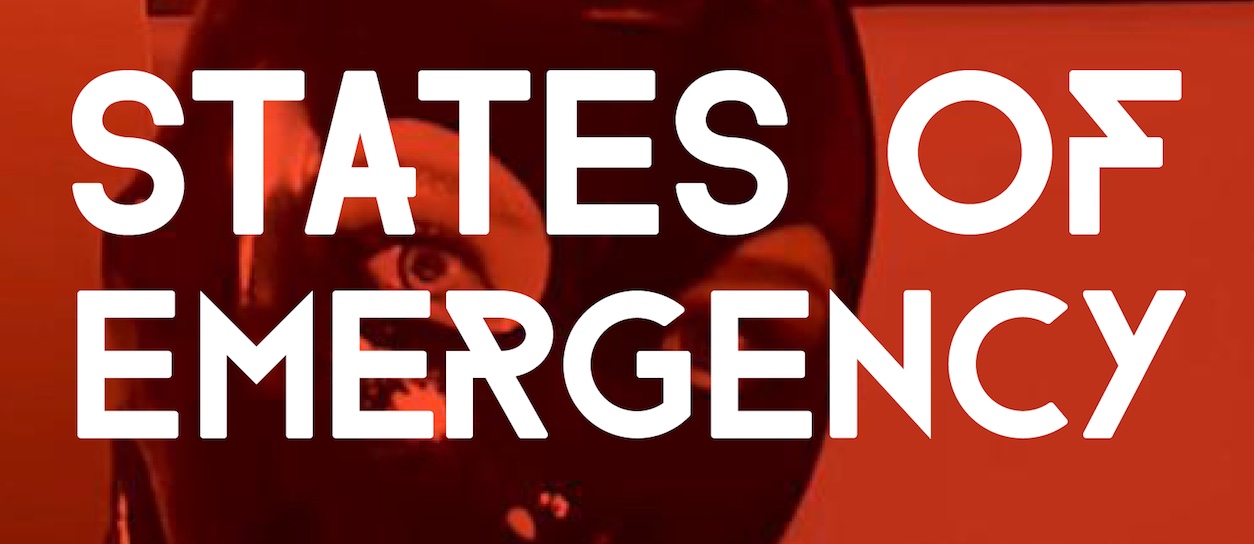
Featuring:
aaajiao (CN) – Iván Buenader (AR) – Claudia Chaseling (DE) + Emilio Rapanà (IT)
Margret Eicher (DE) – Nezaket Ekici (TR/DE) – Thomas Eller (DE)
Amir Fattal (IL/DE) – Doug Fishbone (US/UK) – Máximo González (AR)
Hannu Karjalainen (FI) – David Krippendorff (US/DE) – Shahar Marcus (IL)
Milovan Destil Marković (RS/DE) – Christian Niccoli (IT) – Kirsten Palz (DK)
Nina E. Schönefeld (DE) – Sumugan Sivanesan (AU)
Curated by Rachel Rits-Volloch & Emilio Rapanà
in cooperation with Constanze Kleiner
OPENING (2G+):
11 December @ 7-9pm
EXHIBITION:
11 December 2021 – 27 March 2022
FINISSAGE (2G+):
27 March @ 6-9pm
Live Performance @ 7pm
Hannu Karjalainen Performs His Visual Album LUXE
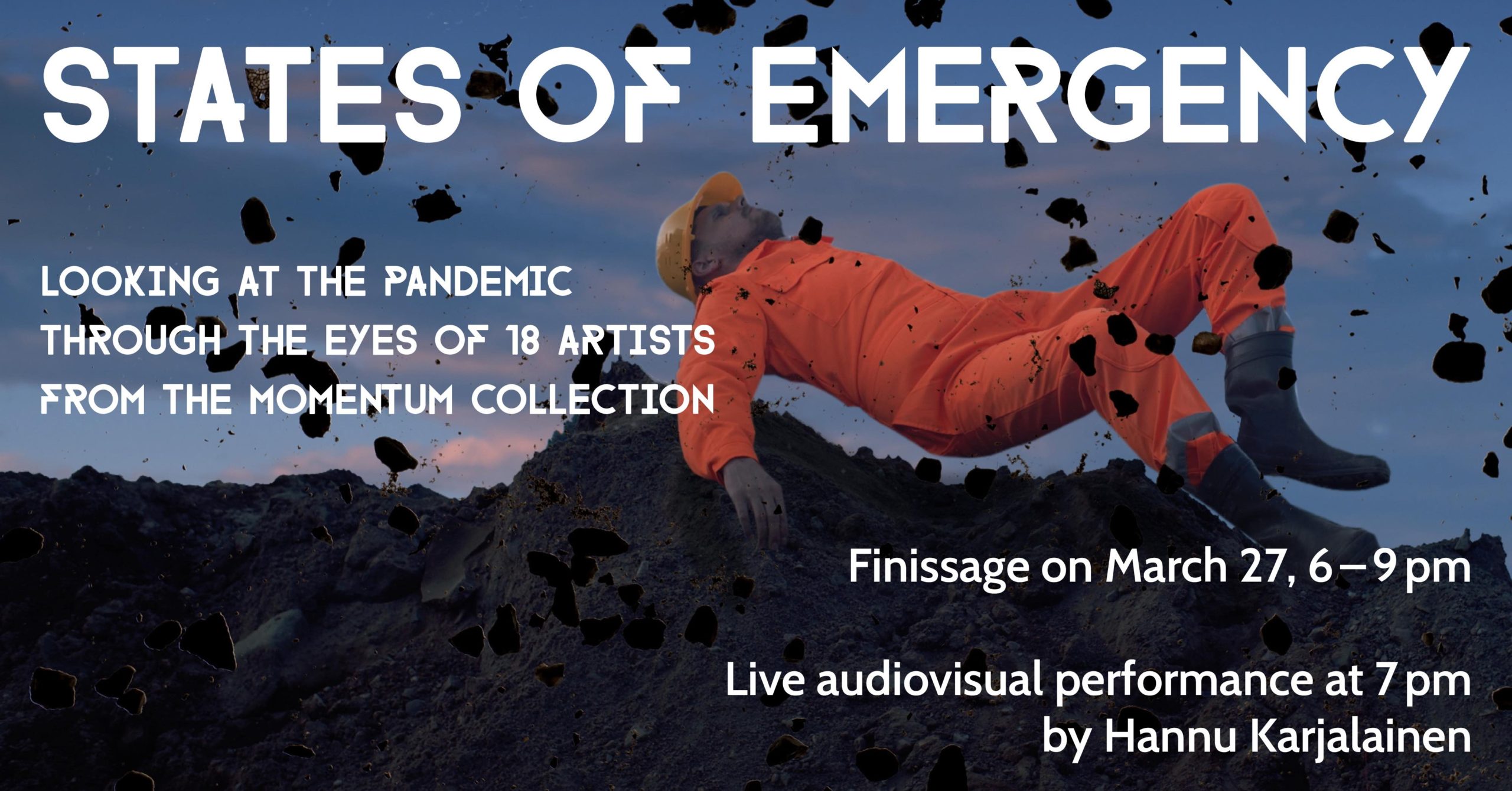
Finnish artist and composer Hannu Karjalainen presents a live rendition of his most recent audiovisual album, LUXE, released by Berlin record label Karaoke Kalk in December 2021. While STATES of EMERGENCY poses the question ‘What is the role of the artist in a state of emergency?’, LUXE is inspired by a parallel question: ‘Whether being able to make art in times when the world is quite literally burning must be understood as a luxury or rather a necessity that helps humans to reflect upon the slowly unfolding catastrophes around them?’.
@ MOMENTUM
Kunstquartier Bethanien
Mariannenplatz 2, Berlin
Opening Hours:
11 DEC – 28 FEB: WED – SUN @ 1-7pm
1 – 25 MARCH: WED – FRI @ 1-7pm
26 MARCH: 1-7pm & 27 MARCH: 1-9pm
& ONLINE EXHIBITION:
Watch STATES of EMERGENCY Video Program on IKONO TV > >
Iván Buenader – Nezaket Ekici – Doug Fishbone – Hannu Karjalainen – Shahar Marcus – Christian Niccoli – Nina E. Schönefeld
Supported by
 |
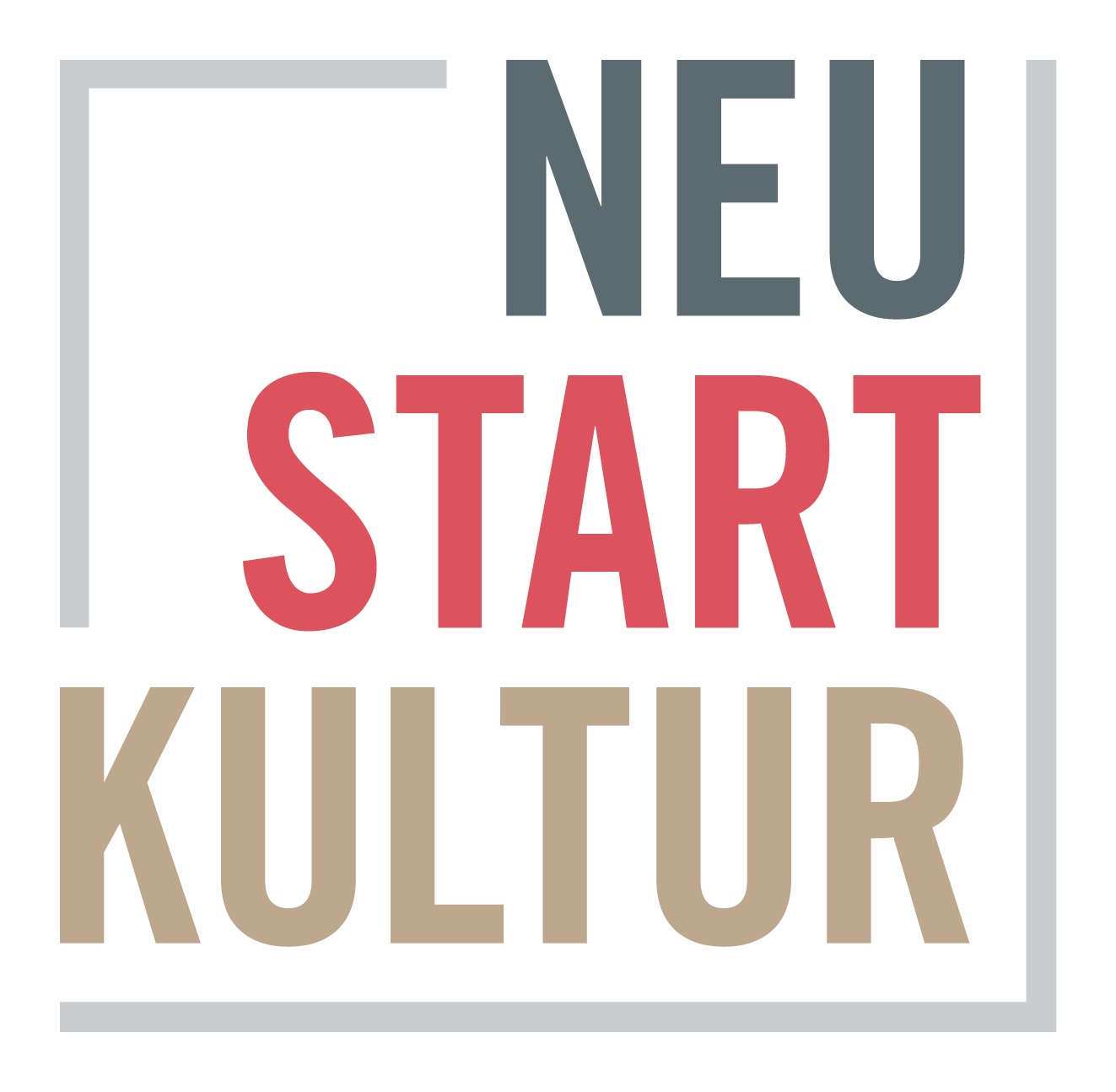 |
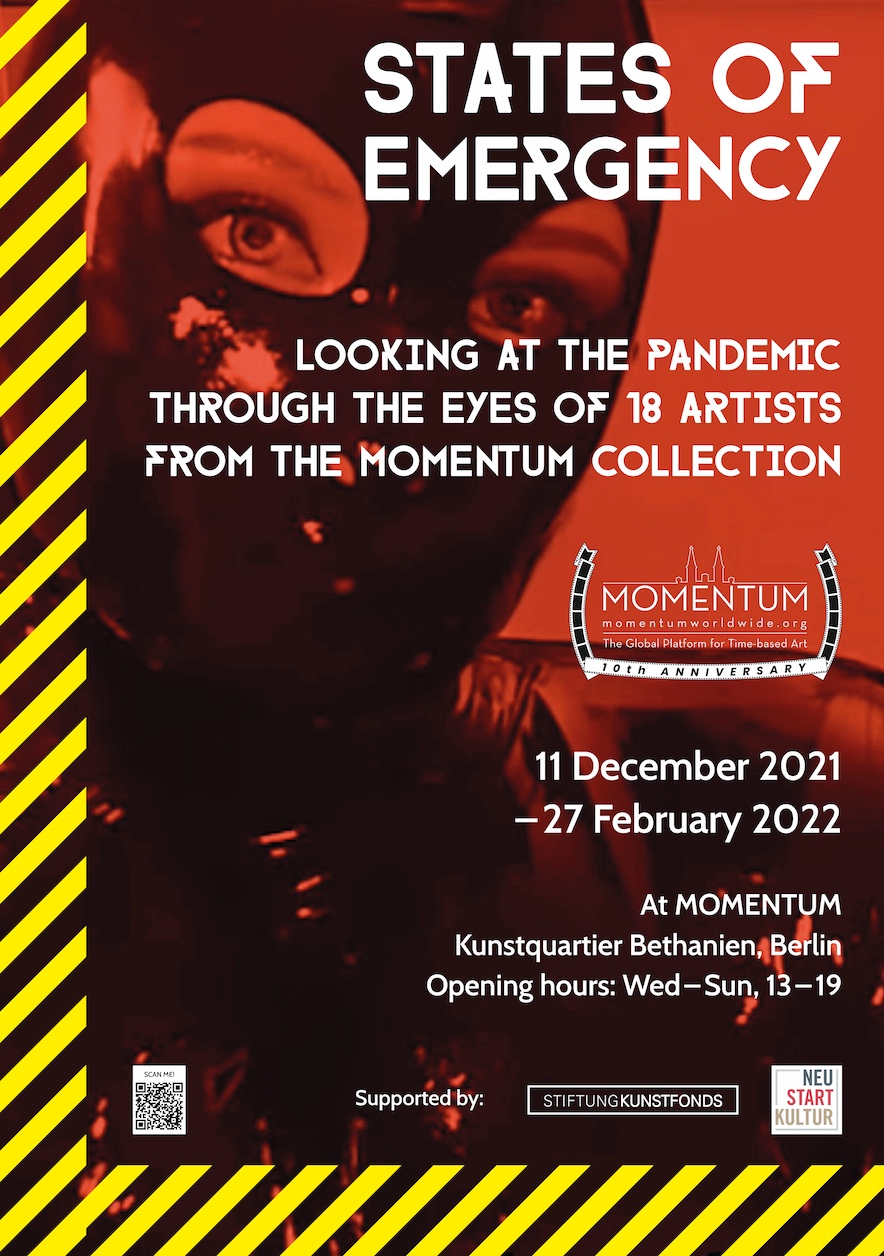
EXHIBITION EXTENDED TO 27 MARCH 2022
When we made the title for this exhibition, we had no idea just how sadly prophetic it would prove. The final month of STATES of EMERGENCY takes place amidst the Russian invasion of Ukraine and the outbreak of war closer to home than any of us could previously imagine. Our hearts go out to our friends, families, and colleagues in Ukraine and all those in Russia hoping for peace, who never wanted this tragic war. During these turbulent times, MOMENTUM extended STATES of EMERGENCY for an additional month as an artistic reflection on a world unmaking itself, relentlessly turning backwards to a Dark Ages of warfare and plague.
The COVID pandemic appears to be here to stay. As we learn how to navigate this new pandemic reality amidst the ongoing chaos of (mis)information and mixed messages, we turn to one another for guidance. Artists – as cultural first-responders – are at the forefront of translating the felt experience of this time of emergency into visual languages, making sense of our precarious times.
STATES of EMERGENCY is a multimedia and gallery exhibition program asking 18 artists from 12 countries: What will emerge out of this global emergency?; While doctors and scientists race to heal our bodies, what will it take to heal the cultural aftermath of COVID?; What is the role of the artist in a state of emergency?
Featuring new works by artists from the MOMENTUM Collection, States of Emergency compiles their responses to a decade of global environmental and political crisis: particularly to the current pandemic emergency which has transformed the lives of many billions of people. States of Emergency, the exhibition marking the end of MOMENTUM’s 10th Anniversary program, is a sequel to COVIDecameron, our ongoing online exhibition of video art curated during the first pandemic lockdown, re-contextualizing existing works in the MOMENTUM Collection. STATES of EMERGENCY, however, brings together entirely new works, made since the start of the pandemic, reflecting directly on the catastrophes of our times and the far-ranging impacts of COVID-19 and its aftermath from socio-economic, environmental, political, global, and personal points of view.
In an era of seemingly endless calamities – pandemics, global warming, political upheavals – life is becoming increasingly cinematic, as the fictions of the screen blur into the realities of the daily news. Disaster scenarios of disease, natural catastrophe, rising sea levels, terrorist attacks, threats of war; is it Hollywood or CNN? Is art mirroring life or vise versa?
While many struggle to survive in these pandemic times, we, the fortunate, surf. We surf the web, the slipstream, the information age. We zoom through meetings, weddings, and funerals. We are constantly connected via smartphones iPads and apps; inundated with images, texts, and tweets; relentlessly bombarded with events, offers and updates; confronted with a barrage of news – real, fake, and somewhere in between. (Mis)information flows more virally than disease. And, confined during the recurrent lockdowns and travel restrictions, we are required to blur the line between real space and cyberspace, living increasingly virtual lives.
Since its inception, MOMENTUM has focused on the growing diversity and relevance of time-based practices by exploring how time-based art reflects the digitization of our societies and the resulting cultural change. As the global race to develop effective vaccines has been paralleled by the race to develop new technologies of digital communication, this question becomes increasingly relevant for our pandemic age. In this era of ongoing travel restrictions, it is good to remember that moving images move us – art is a way of experiencing the world without physically moving through it. Visual languages continue to evolve in concert with the technologies that drive them, and it has been the role of visual artists to push and test the limits of these languages.
Taking the form of video art, performance, installation, painting, drawing, social engagement, sound art, new media and NFT’s, artist talks and interviews, STATES of EMERGENCY is a hybrid exhibition taking place both in the MOMENTUM Gallery, and virtually on the MOMENTUM Channel on the streaming art film program ikonoTV. Click HERE for MORE INFO on STATES of EMERGENCY on ikonoTV > >
[Click on the name of each artist to see the bio and the work description below.]
aaajiao
Iván Buenader
Claudia Chaseling & Emilio Rapanà
Margret Eicher
Nezaket Ekici
Thomas Eller
Amir Fattal
Doug Fishbone
Máximo González
Hannu Karjalainen
David Krippendorff
Shahar Marcus
Milovan Destil Marković
Christian Niccoli
Kirsten Palz
Nina E. Schönefeld
Sumugan Sivanesan
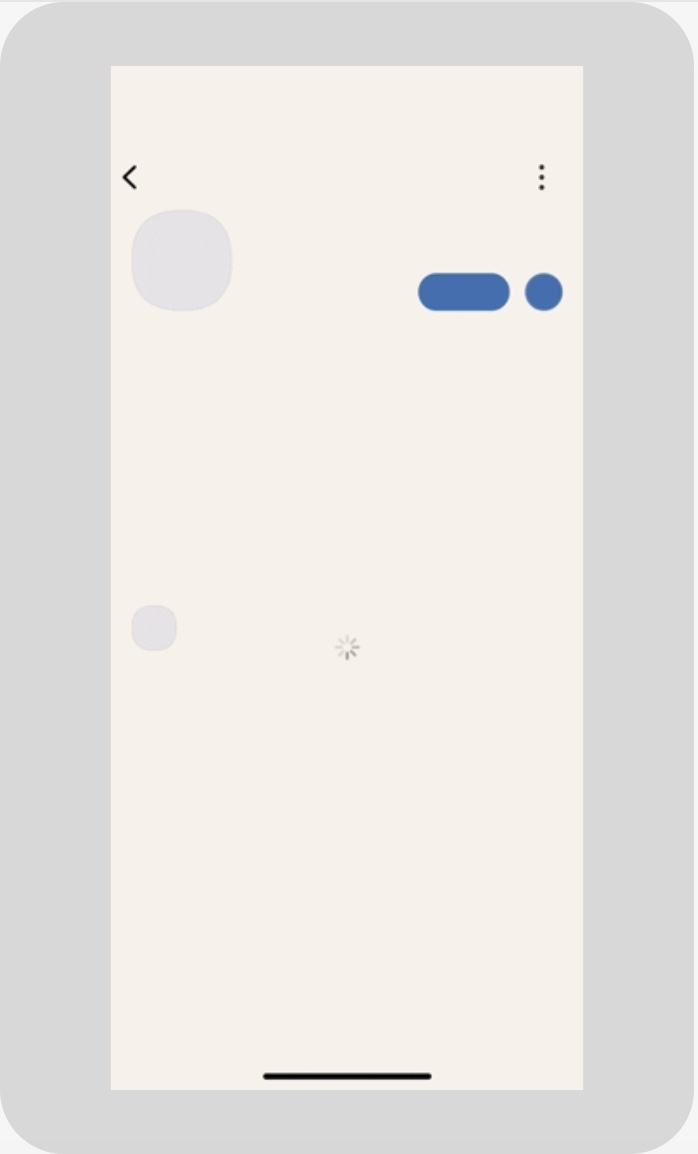
|
Free Will, Open Mic, GFW, Confessions (2021), Video installation, LCD screen, acrylic fittings, 16 x 24 x 3.8cm, 00’10” on loop Free Will, Open Mic, GFW, Confessions is part of a series of four video installations made by aaajiao for his solo exhibition in Shanghai, I was dead on the Internet, in September of 2021. Reflecting on aaajiao’s existential experience of the pandemic lockdowns in his studio in Berlin, these minimalistic video works are also a subtle, yet striking, commentary on China’s increasingly stringent censorship of artistic expression and communication platforms. As a media artist, blogger, activist and programmer, aaajiao has for many years throughout his practice addressed the issue of China’s Great Firewall – the policy of restrictions on internet content begun in 2000, blocking websites which would enable unfettered access to media and information. His 2017 work 404404404, held by the MOMENTUM Collection, is an analog installation of the universal online code signifying a blocked website. In the work shown in this exhibition, aaajiao inscribes the Great Firewall (GFW) into the very title of the work. As a Chinese artist, aaajiao’s work is necessarily subtle, if he is to have any hope of showing it in his home country. In the series of video installations made for I was dead on the Internet, aaajiao recreates the interfaces of various mobile communications apps (twitter, facebook, ins, and clubhouse), as empty outlines, largely devoid of content, simply tracking the passage of time. Our increasing reliance on the internet was proven time and again during the pandemic, when, for most people trapped at home, it proved to be our only way to communicate – personally and professionally – with the outside world. Yet what if this communication ceases to exist? Free Will, Open Mic, GFW, Confessions depicts the online discussion platform Clubhouse, which was launched during the first pandemic lockdown as a new type of audio social network to enable people to come together to talk, listen, and learn. Yet the app is empty. Only a perpetually looping refresh symbol shows that we are looking at a moving image. Clubhouse was a revelation for younger generations in China, who used this platform to speak with one another and exchange ideas across this vast country. Yet after only two months, Clubhouse was shut down in China. In this series of work, aaajiao also responds to his own experience of having his Weibo (the Chinese equivalent of Facebook) account blocked earlier this year, and to the ongoing erasure from the internet (and hence from popular historical record) of important cultural figures in China: filmmakers, artists, writers. Such ‘death on the internet’ has a far less metaphoric equivalent in a time of crisis, when the content of the Internet was largely devoted to pandemic death tolls, while we all know people who died from the virus. Free Will, Open Mic, GFW, Confessions from I was dead on the Internet, comingles aaajiao’s felt experience of the COVID pandemic – the frustration and isolation of lockdown, the depression over the death of loved ones, the stasis of perpetual uncertainties – with the threat if digital death; the possibility of being silenced and erased from cyberspace.
|
aaajiao (b. 1984, Xi’an, China. Lives and works in Shanghai, China and Berlin, Germany) Active online as a media artist, blogger, activist and programmer, aaajiao is the virtual persona of Shanghai- and Berlin-based artist Xu Wenkai. Born in 1984 — the title of George Orwell’s classic allegorical novel — in one of China’s oldest cities, Xi’an, aaajiao’s art and works are marked by a strong dystopian awareness, literati spirit and sophistication. Many of aaajiao’s works speak to new thinking, controversies and phenomenon around the Internet, with specific projects focusing on the processing of data, the blogosphere and China’s Great Fire Wall. aaajiao’s work is interdisciplinary, extending from post-internet art to architecture, topography, design, and beyond to capture the pulse of the young generations consuming cyber technology and living in social media. aaajiao’s work has been featured in numerous exhibitions around the world. Recent shows include: “Deep Simulator” Castello di Rivoli Museo d’Arte Contemporanea, Turin (2019-2021); “Art in the Age of the Internet, 1989 to Today”, The Institute of Contemporary Art, Boston, USA (2018); “unREAL”, Haus der elektronischen Künste, Basel, Switzerland (2017); “Shanghai Project Part II”, Shanghai, China (2017); “Remnants of an Electronic Past”, Centre for Chinese Contemporary Art, Manchester, UK (2016); OCAT Contemporary Art Terminal Xi’an, China (2016), “Temporal Turn: Art and Speculation in Contemporary Asia”, Spencer Museum of Art, Kansas, USA (2016); “Take Me (I’m Yours)” (curated by Hans Ulrich Obrist, Jens Hoffmann and Kelly Taxter), Jewish Museum, New York, USA (2016); “Overpop”, Yuz Museum, Shanghai, China (2016); “Hack Space” (curated by Hans Ulrich Obrist and Amira Gad), K11 Art Foundation Pop-up Space, Shanghai, and K11 Art Museum, Hong Kong, China (2016); “Globale: Global Control and Censorship”, ZKM | Centre for Art and Media, Karlsruhe, Germany (2015); “Thingworld International Triennial of New Media Art”, The National Art Museum of China, Beijing, China (2014); Transmediale Festival of Digital Art, Berlin, Germany (2010). aaajiao was awarded the Illy Present Future Prize in 2019, the Art Sanya Awards Jury Prize in 2014, and was nominated for the first edition of OCAT-Pierre Huber Art Prize in 2014. |
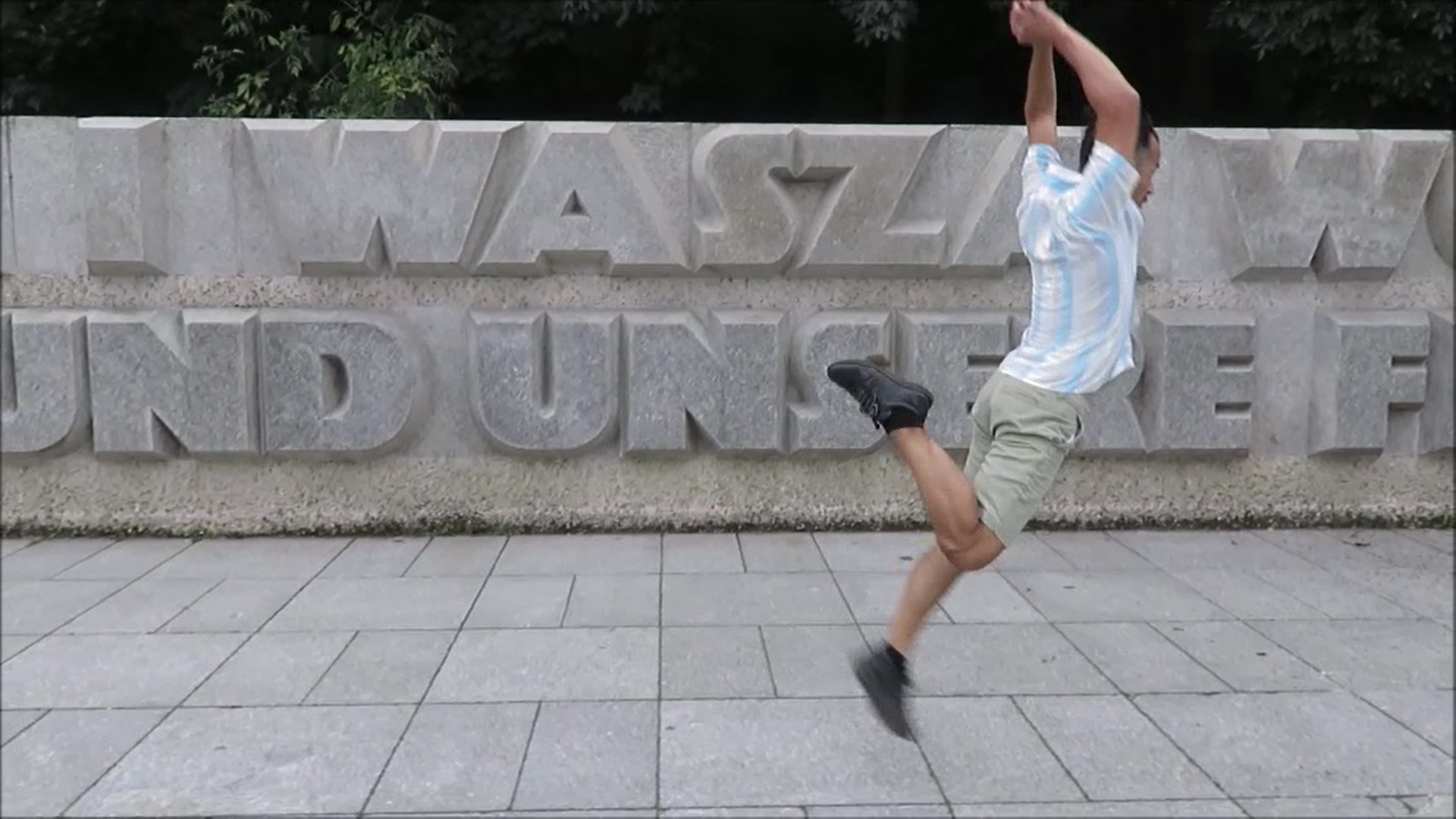 Volkspark (2021), video performance, 3’ |
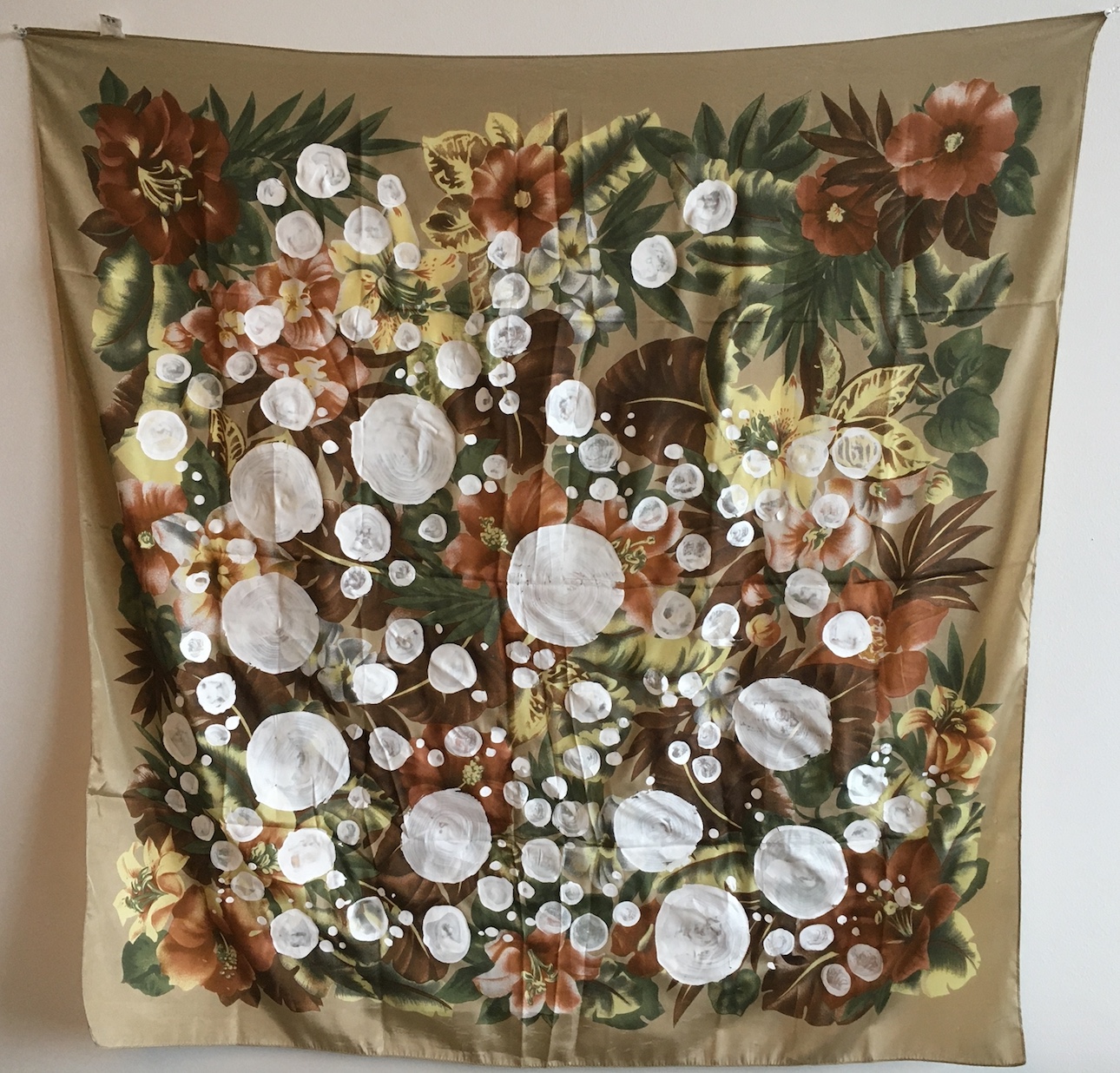 The Sower in the Courtyard of the Columns (2021), wall paint on silk shawl, 85 x 85cm |
|
Iván Buenader’s video performance, Volkspark, is the latest in a series of impromptu dance performances enacted within the context of every Artist Residency in which he participates. In this case, the work results from his 3-month Residency at MOMENTUM AiR during the summer and autumn of 2021 – a period of cautiously hopeful ‘normality’ in a city still learning to cope with the ongoing aftermath of the pandemic. Buenader is not a dancer. His dance series is not intended as a performance of technical competence, but rather, as his way of experientially engaging with every Residency location by means of mapping the movements of his body onto that space – be it a studio, cityscape, or countryside. The very act of movement through space connotes a freedom of which many were deprived during the long months of pandemic lockdown. While the title of the chosen soundtrack to this performance – “(I just don’t wanna) Miss A Thing” by Kylie Minogue – evokes the thirst for actual experience after months of isolation, coupled with the artist’s journey of discovery through Berlin’s multifaceted cityscape. In Volkspark (meaning People’s Park in German), Buenader dances through Berlin’s oldest public park: Volkspark Friedrichshain. Dressed in clothes found on the streets – the literal social fabric of Berlin – he moves amidst various monuments inscribed with references to battles, conquests, nations, historical milestones, popular mythologies, and literary characters of children’s fables (the Fountain of Fairy Tales; the Berlin Bear; statues of Frederick the Great, the Javelin Thrower, and Mother and Child; Memorials for German fighters in the Spanish Civil War, and for Polish soldiers and anti-fascist Germans in WWII; and stairs on the hill covering the remains of one of several WWII bunkers and flak towers still inscribed within the fabric of the cityscape). “The remains that are hidden and lie buried under the appearance of a hill, as well as the static, immovable, inert sculptures that function as tributes to powerful entities or to people who gave their lives, voluntarily or involuntarily, to defend historical or temporal community values, they play a symbolic game with the living, mobile, restless body, which teaches freedom as it orbits around these monoliths, calling for a re-interpretation of memory.” – Iván Buenader |
This work forms part of Buenader’s ongoing series of paint on textile works. Literally addressing the social fabric, the artist paints abstract alphabets of signs and symbols onto found materials collected in the various cities to which his peripatetic practice leads him. Scarves, blankets, tablecloths, shower curtains, and more found on the street, given by friends, or discovered in flea markets – these relics of the social fabric form the canvases for Buenader’s interventions. Iván Buenader (b. 1972 in Buenos Aires, Argentina. Lives and works in Alicante, Spain and Mexico City, Mexico). Iván Buenader is an Argentinian writer and visual artist based between Alicante and Mexico City. He graduated in Computer Science from the University of Buenos Aires. He has exhibited his work (painting, photography, video, installation) in contemporary art venues in Latin America, the United States, Canada, India and Europe, while participating in numerous artist residencies – including MOMENTUM AiR in August – November 2021. He has conceptualized and produced collective interdisciplinary projects including poetry, music, dance and performance (‘CFW Poet Agency’). He is author of 11 novels and 6 books of experimental poetry. |
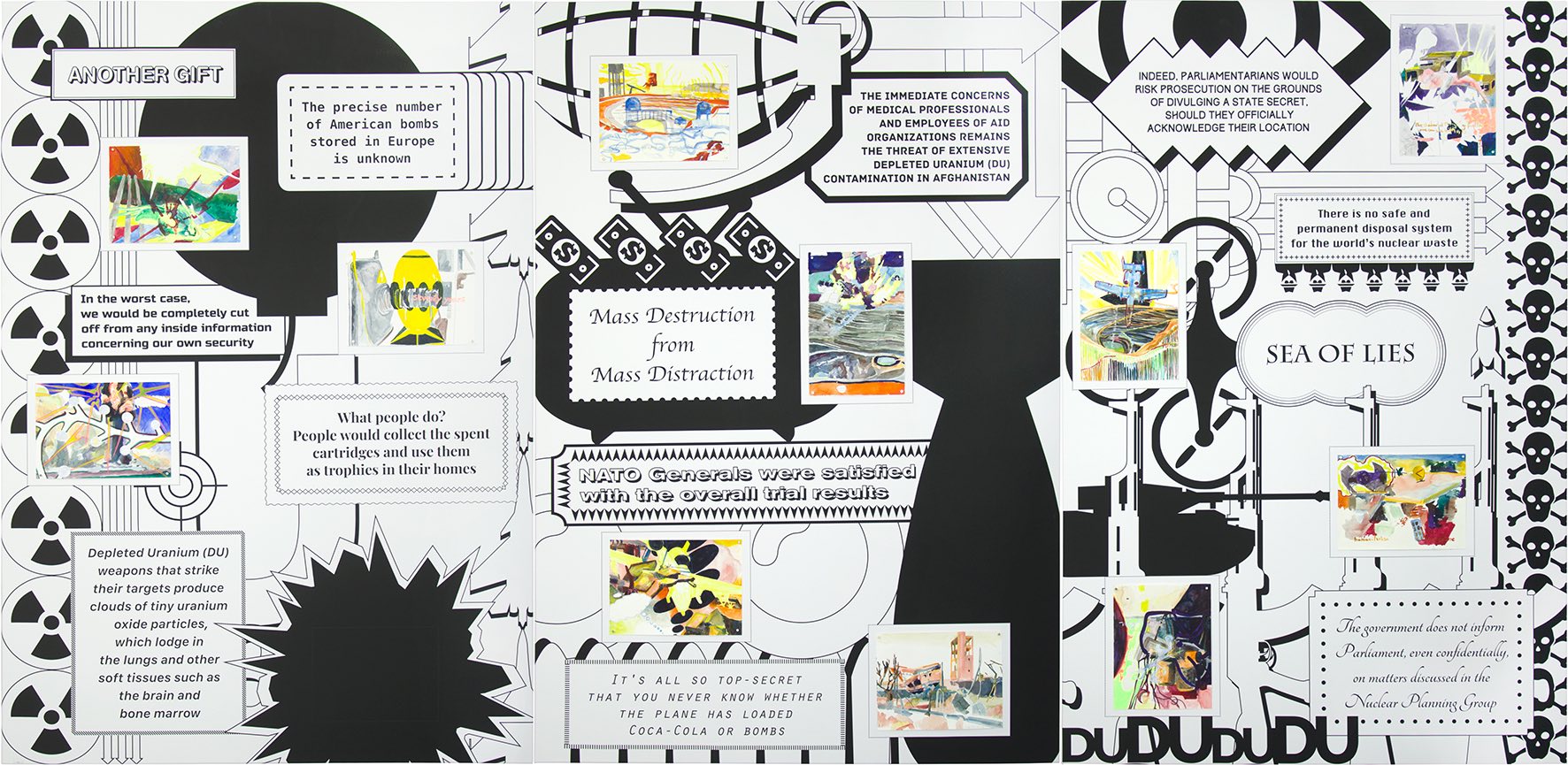
|
deluge of delusion 1 (2021), digital print on canvas and 10 watercolors on paper, 190cm x 390cm deluge of delusion 1 was made during the first pandemic lockdown in the spring of 2020, intended to be shown in Claudia Chaseling’s solo exhibition, mutopia 5, at the Australian Embassy in Berlin. This 4-month exhibition took place, despite pandemic restrictions. However, this particular work was not shown. We were required to remove deluge of delusion 1 from the exhibition due to its political content. For an artwork to fall victim to censorship in this day and age in Germany – though technically on Australian soil – should be as much a compliment as an outrage. In States of Emergency, we are proud to present deluge of delusion 1 for the first time. Chaseling’s works are, indeed, inherently political. It took a global pandemic to stop the world in its tracks under the threat of an invisible killer which pays no heed to national borders or political will. Yet Claudia Chaseling has been painting another such invisible killer for over a decade. While the eyes and hearts of the world were focused on the viral threat and aftermath of COVID-19, Chaseling, working in her studio throughout the first lockdown, was addressing another kind of insidious invisible killer: radiation and its repercussions – namely, the radioactive contamination of depleted uranium munitions. The visual language Chaseling has created and the imagery in her work consists of distorted landscapes in toxic colors, poisoned places, mutated creatures and plants whose deformation is caused by radioactive contamination. Her images are not predictions of some post-apocalyptic future, but rather the result of her research into historic and ongoing ways in which we continue to poison our planet with the byproducts of wars and nuclear accidents. To ground the psychedelic fantasy of her imagery in the harsh realities of the nuclear chain her work exposes, Chaseling embeds within her paintings quotations and URLs referencing her source materials, mapping the places polluted by depleted uranium – an environmental contaminant that is a derivative waste product of nuclear power and nuclear weapons technology. Inscribing fact into figuration, normally the text is embedded seamlessly within the spacial structure of each painting, becoming itself an abstract form. Yet in deluge of delusion 1, Chaseling, working for the first time in cooperation with designer Emilio Rapanà, foregrounds quotations from her research, using the text and design to frame 10 small watercolor studies for her large spatial paintings. The resulting “deluge of delusions” both informs and protests about the fatal status quo of global energy and arms industries, and the nuclear chain that leads to radioactive contamination and its poisoning of our planet. Claudia Chaseling has for over a decade dedicated her practice to the pernicious weapon of mass destruction which is depleted uranium. Yet it remains, to this day, no less of a global emergency than when she began. |
Claudia Chaseling (b.1973 in Munich, Germany. Lives between Berlin, Germany and Canberra, Australia.) Claudia Chaseling studied at Academy for Visual Arts in Munich, Germany, and Academy of Visual Arts in Vienna, Austria. She received her Master’s degree in Visual Arts from both the University of the Arts (UdK) in Berlin, and the School of Art at the Australian National University in Canberra, Australia, where she also completed her PhD in Visual Arts. Chaseling is known for the practice of Spatial Painting, site-mutative biomorphic abstract works and murals, which cover walls, floors and ceilings. The Spatial Paintings are drafted from one particular viewpoint, to distort and dissolve the familiar geometry of the space, whilst carrying socio-political meaning. In 2013 she published the graphic novel Murphy the mutant that became an anchor for her work to follow. The diverse body of works, from Spatial Painting to the Graphic Novels, deal with facts and the consequences of today’s socio-political systems and their effects on the environment. Chaseling has exhibited her work in over sixty solo and group exhibitions, notably in the United States, Australia and Europe. Among other major international exhibitions, her work has been featured in the X-Border Biennial, Finland; the Luela Art Biennial, Sweden; and the Lorne Sculpture Biennial, Australia. Recent projects include solo exhibitions at Art Gallery Nadezda Petrovic, Cacak, Serbia; Wollongong Art Gallery and Yuill Crowely Gallery, Sydney, Australia; Kunstverein Duisburg; Staatliche Kunsthalle Baden-Baden; with MOMENTUM at the Australian Embassy, Berlin; at Rohkunstbau 26 in Schloss Lieberose, Germany; and with Art in Buildings in Milwaukee and New York City, USA. Major grants and scholarships received in Australia and Germany include the DAAD; the Samstag Scholarship; the Studio Award of the Karl Hofer Society; the Australia Council for the Arts Grant in 2014; and the 2015/16 artsACT Project Grant. She has taken part in various international visiting artists programs and artists residencies, including Yaddo in New York; Art Omi and the International Studio and Curatorial Program in New York City; Texas A&M University; the Australian National University (ANU); amongst others. The Verlag für zeitgenoessische Kunst und Theorie Berlin published her first extensive monograph in 2016. In 2022 the book “Dissonance – Painting in Germany Today“ will be published by DCV featuring 80 artists of her generation: the “millennial painters”.
MORE INFO >> https://www.momentumworldwide.org/exhibitions/mutopia5/ |
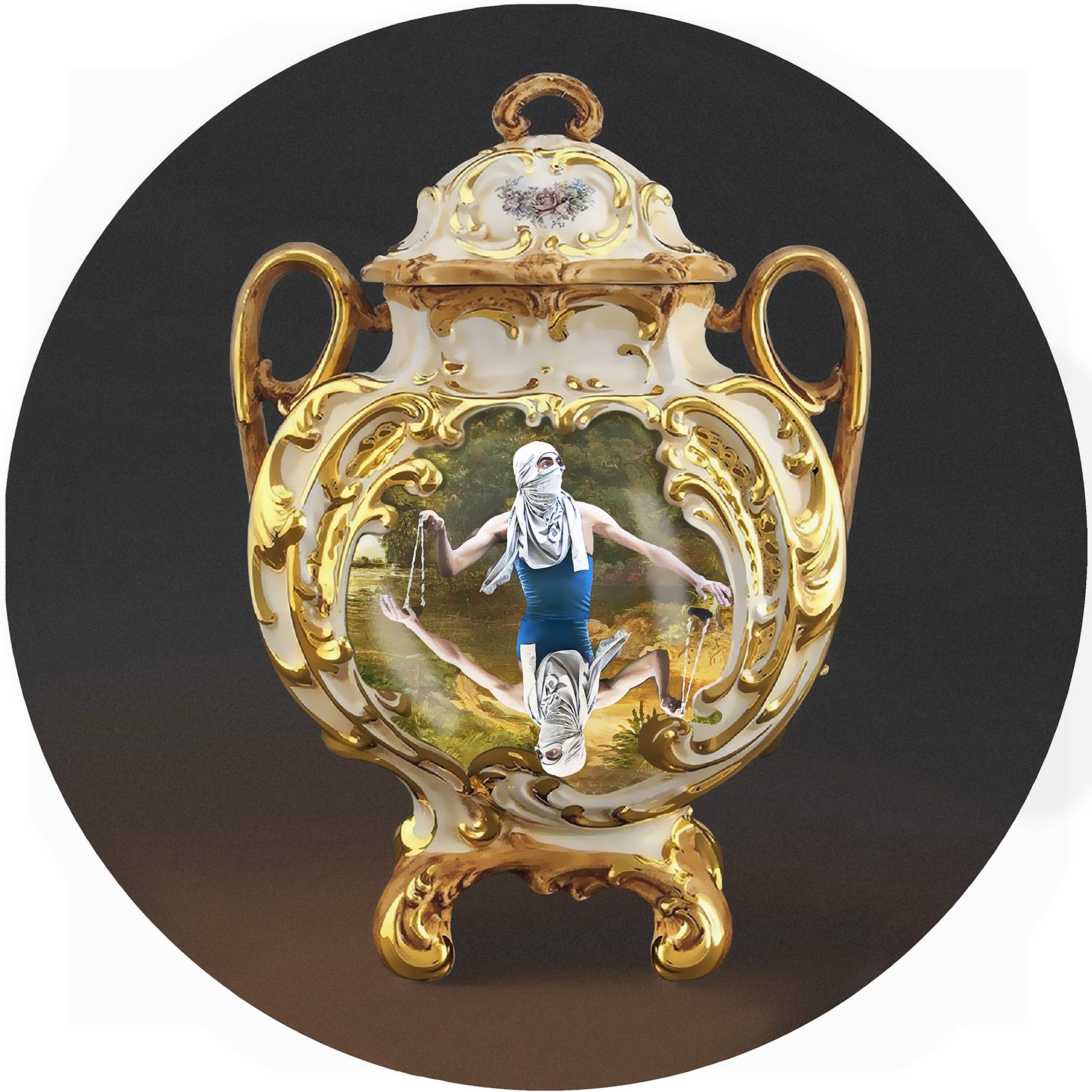
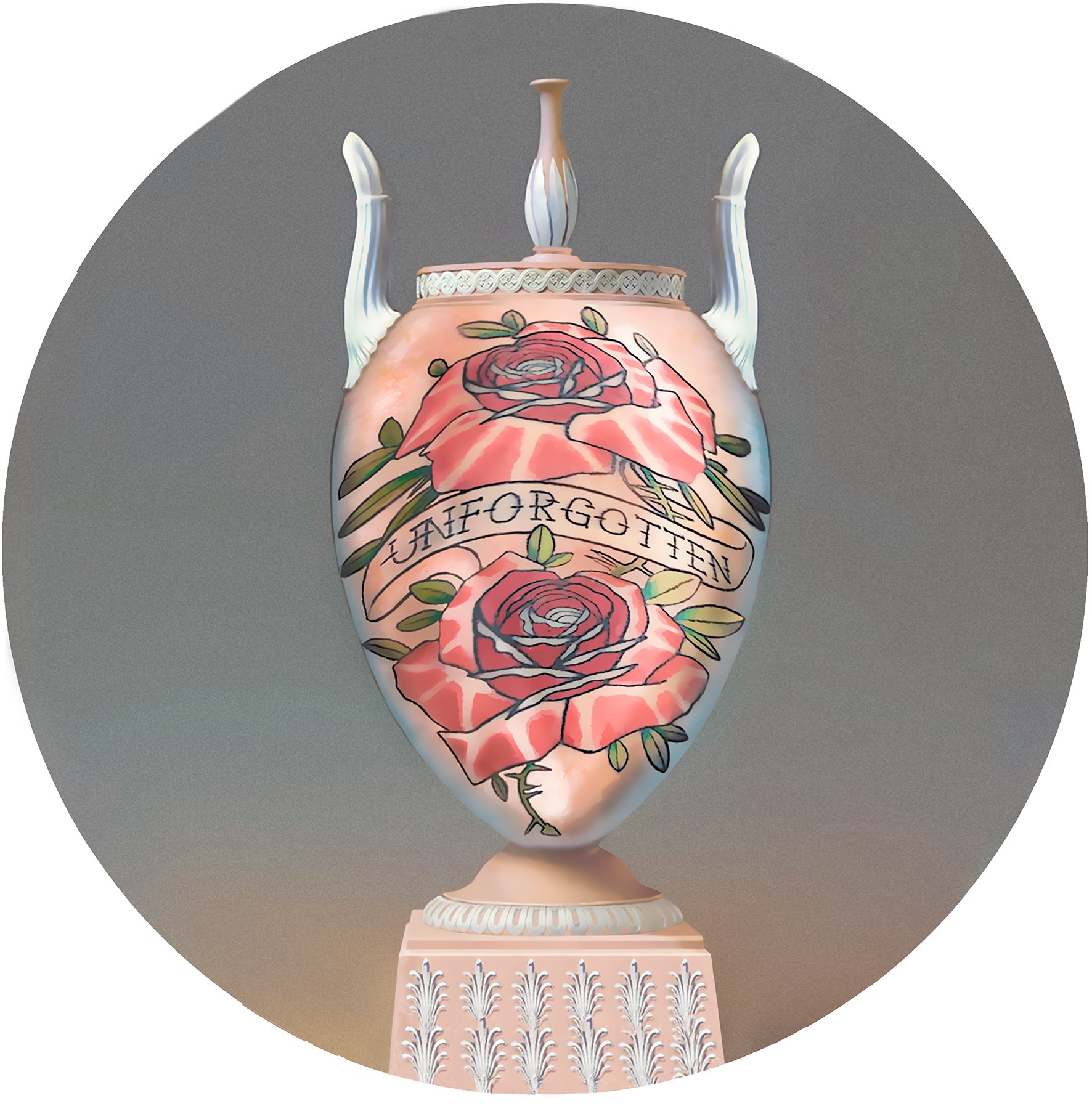
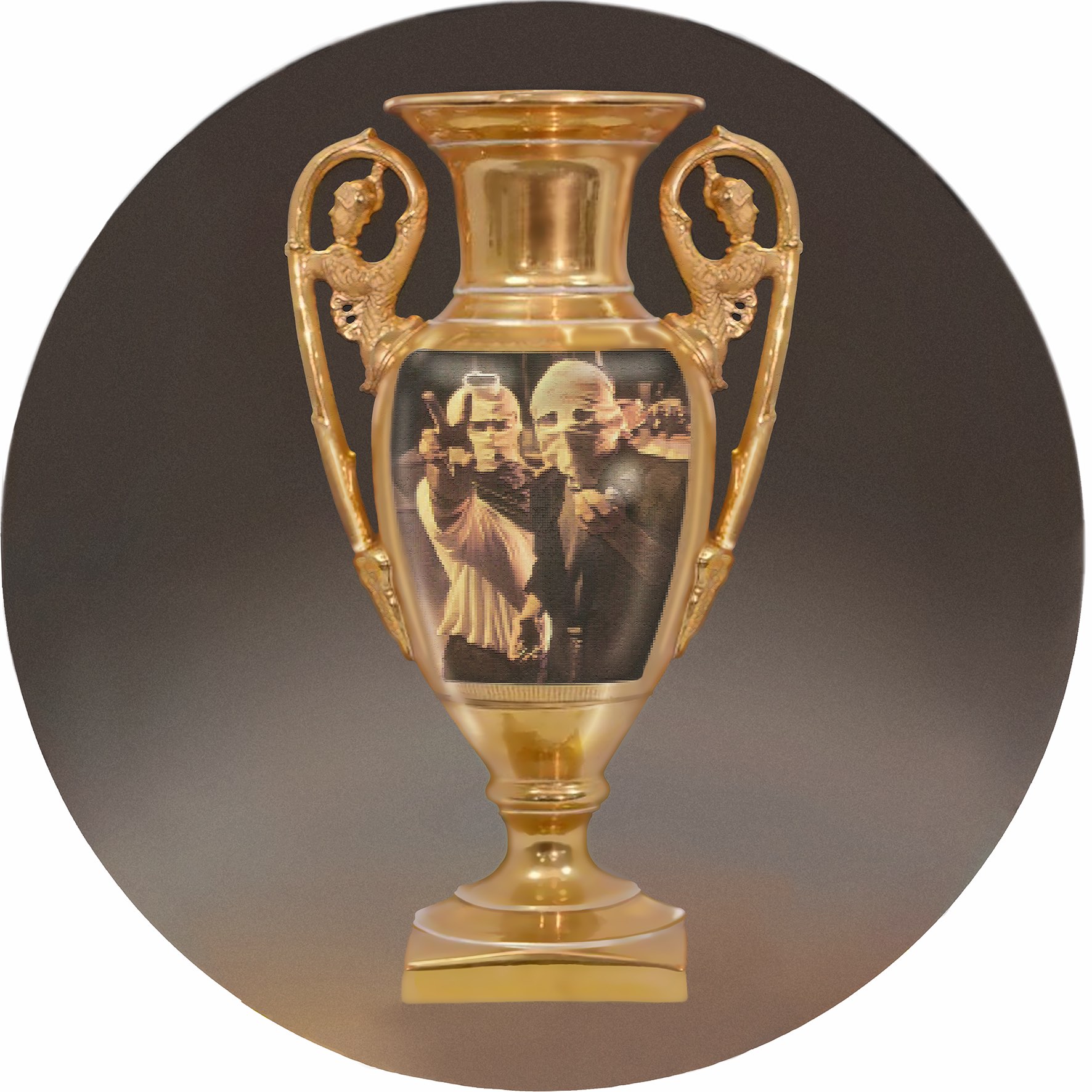
The Unbelievables: Uncorrect, Unforgotten, and Unlimited (2020/21), 3 digital montages on aludibond, each diameter 40cm
|
The Unbelievables series of digital montages, like so much of Margret Eicher’s practice, addresses the strongly increasing reliance on images in our society. It is no longer text and language that primarily shape political, social and individual attitudes, but ubiquitous images whose truth content is usually no longer verified, and whose meaning can too easily be taken out of context. Invoking academic research in image theory and visual culture alongside quotations from art history, Margret Eicher’s work is about how we think in images. Comingling elements of the Baroque with found images from the internet depicting violent protestors and contemporary tattoo, The Unbelievables series of work brings stark parallels between decorative culture and the daily realities of our current moment of crisis. Baroque vases and ornamental amphorae are part of a courtly pictorial tradition of decorative objects for the bourgeoisie intended as a sign of status, wealth, and power. Such sets of vases made of porcelain and fine china appear in this period, traditionally placed in threes or fives as crowning pieces on mantels or in cabinets. The vessels were not only ornamentally decorated, but often featured pictorial cartouches that paid homage to rulers in effigies, celebrated events, or honored famous personalities of the times. Eicher’s digital montages in The Unbelievables series take this veneration and homage to the extreme by superimposing press photos of violent protesters onto authentic cartouche images of historical vases. By means of this inversion, Eicher addresses the dissolution of a common value system and the culturally divisive tendencies in our society. Made amidst the pandemic, the contrasting duality inherent in these works is a perfect reflection of our times, where the news images of death and protests – from Black Lives Matter to the lunacy of antivaxers – which filled the long days of lockdown, were accompanied by the seemingly endless parade of Amazon deliveries to all our neighbors ceaselessly shopping. |
Margret Eicher (b. 1955 in Viersen, Germany. Lives and works in Berlin, Germany.) Margret Eicher works primarily with intricate digital collages produced as large format tapestries woven on a digital loom. Invoking the traditional use of the tapestry as a tool of wealth and power, and commenting on our increasing reliance on digital culture, Eicher fills her tapestries with contemporary icons from our overly mediated age alongside quotations from art history. Recent solo exhibitions include: Stade, Schloß Agathenburg, Germany (2010); Erarta-Museum, St. Petersburg, Russian (2011); Goethe-Institut Nancy (F) Strasbourg (F) ARTE /ZKM Karlsruhe, Germany (2011); Hamburg Galerie Carolyn Heinz, Hamburg, Germany (2012); Kunstmuseum Heidenheim, Germany (2012); Badisches Landesmuseum, Karlsruhe, Berlin Orangerie Schloss Charlottenburg, Germany (2013); Anger Museum Erfurt, Kunstmuseum Ahlen, Germany (2014); CACTicino, Bellinzona, Switzerland (2014); Kunsthalle am Hamburger Platz, Berlin, Germany (2015); Gallery Baku, Azerbaijan (2015); Port 25 Mannheim, Germany (2016); Kunstverein Ulm, Germany (2017); Sprengel Museum, Hannover, Germany (2018); Museum Villa Stuck, Munich, Germany (2020); Haus am Lützowplatz, Berlin, Germany (2021); Galerie Michael Janssen, Berlin, Germany (2021). Recent group exhibitions include: Kunsthalle Darmstadt, Germany (2008); Galerie Eugen Lendl, Graz, Austria (2010); Musee des Beaux-Arts de Tournai, Tournai, Belgium (2011); MOCAK, Krakow, Poland (2012); Museum Liner, Appenzell, Switzerland (2012); Rohkunstbau, Berlin/Roskow, Germany (2013); Tichy Foundation, Prague, Czech Republic (2013); MPK, Kaiserslautern, Germany (2014); Museum Kurhaus Kleve, Germany (2014); Gallery of Art Critics Palace Adria, Prague, Czech Republic (2015); KHM, Vienna, Austria (2015); Stresa, Italy (2015); Kaiserslautern, Germany (2016); Museum Liner, Appenzell, Switzerland (2017); Leipzig, Germany (2017); Galerie Deschler, Berlin, Germany (2017); Singen, Kunstmuseum, Germany (2017); ZKM, Karlsruhe, Germany (2017); Kunstverein Pforzheim , Haus am Lützowplatz Berlin, Kunstverein KunstHaus Potsdam, Germany (2018); Kunstverein Tiergarten, Berlin, Germany (2019); Room Berlin, Germany (2019); Stiftung Staatlicher Schlösser und Gärten Berlin-Brandenburg, Germany (2019); Berlin, Germany (2020); MOMENTUM & Kleiner von Wiese, Zionkirche, Berlin, Germany (2021); Schloss Pillnitz, Dresden, Germany (2021). |
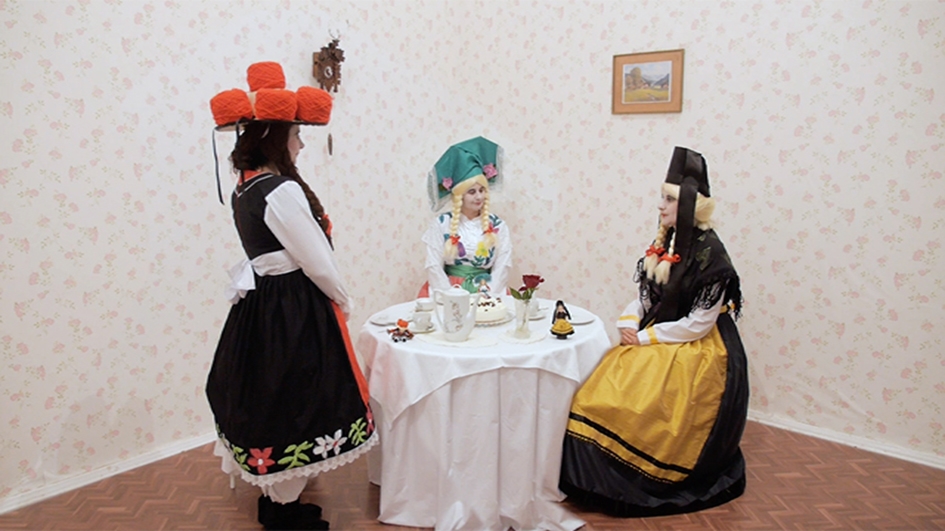
|
Kaffeeklatsch (2019/2020), Video Performance, HD, 6’17”, on loan from the artist In her video performance and accompanying discussion series Kaffeeklatsch, Nezaket Ekici refers to the German afternoon ritual of ‘coffee and cake’, a time of meeting and togetherness for many German families. The history of coffee gossip is a long one. In Germany in the 16th and 17th centuries, with the rise of the bourgeoisie, women began meeting for coffee gossip – “Kränzchen” – to exchange ideas among themselves, allowing them a taste of freedoms that up until then had been reserved for men in social circles. Nezaket Ekici addresses the tradition of the coffee klatsch from her perspective as a migrant and a fully integrated German, questioning her sense of belonging in German society. She asks herself what her own German tradition is – which leads to the general question of what actually is German tradition? In order to answer these questions, Ekici stages herself as three characters dressed in traditional German costumes from the Black Forest, the Spreewald, and Thuringia, representing the south, the north and the center of Germany. With the focus on the articulation, gestures, and facial expressions of the performer, Ekici drinks coffee with her doppelgangers in this playful video addressing the fine line between foreignness and belonging. Watching this work now – on the cusp of the third year of social distancing and intermittent lockdowns, when we have all spent far too much time in our own company – we come to see how very precious this simple freedom is, to gather together with one another.
|
Nezaket Ekici (b. 1970 in Kirsehir, Turkey. Lives and works in Berlin & Stuttgart, Germany and Istanbul, Turkey.) Nezaket Ekici holds a degree in Fine Arts, an MA in Art Pedagogy, and an MFA degree, having studied Art History and Sculpture at the Ludwig-Maximilians-University and Fine Arts Academy Munich (1994-2000). From 2001 to 2004 she studied Performance Art under Marina Abramović at the Hochschule der Bildenden Künste Braunschweig. Ekici’s video, installations and performances are often process-based and ask viewers to derive their own emotional and intellectual interpretations. In her work, complex, often controversial topics are tackled with humor in highly aesthetic compostions. Ekici frequently uses her own Turkish origins and education as a subject of tension, pitting her background against her living environment in Germany. Cultural, geographic and individual boundaries, transgressions, gender, authorial bodies, art history, religion, culture and politics are central to Ekici’s works. By highlighting these themes in everyday life and placing them in a new context, she aims to interconnect every element to form a total work of art — a Gesamtkunstwerk. Nezaket Ekici has presented more than 250 different performances in more than 170 cities in over 60 countries on 4 continents. Selected international exhibitions since 2000 include: Museum Haus der Kunst in Munich; The Irish Museum of Modern art in Dublin; 25. May Museum Belgrade; PAC Milano; Venice Biennale; P.S.1 New York; Van Gogh Museum Amsterdam; Reina Sophia Museum, Madrid; Museum of Contemporary Art, Istanbul; The Museum of Contemporary Art Taipei/ Taiwan; Poznan Biennale; Curiciba Biennale; Tel Aviv Museum of Art; Istanbul Modern; Marta Herford; Minsheng Art Museum Shanghai; Haus am Waldsee Berlin; KunstWerke Berlin; Oslo Museum; The Contemporary Art Gallery of Georgia, Georgia National Museum, Tbilisi; Museum of Contemporary Art in Krakow, Total Museum Seoul, and many more. Ekici was an Artist-in-Residence at the Cultural Academy Tarabya, Istanbul (2013-14), was the recipient of the Rome Prize for an Artist Residency at the German Academy, Villa Massimo, Rome (in 2016-17); and participated in the Schlingensief Opera Village Residency in Burkina Faso, Africa (2021). She received the Paula Modersohn-Becker Art Award (2018), and received the Berlin Culur Senate prize for her Artist Residency at the International Studio & Curatorial Program (ISCP) in Brooklyn, New York (2020).
|
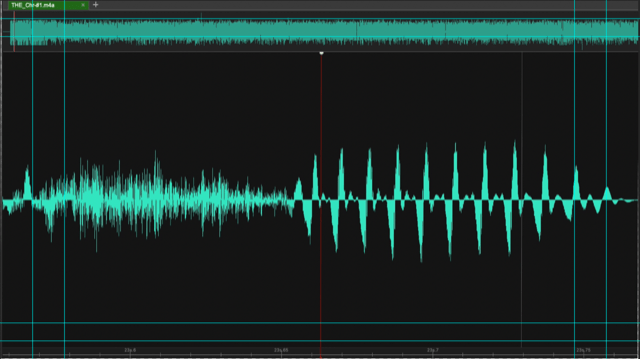
|
THE dna by Siri (2021), presented as sound waves and audio on a flatscreen, approx 15.6 years, and as an NFT “My entire DNA/Genome has been minted as an NFT. What you are hearing is Siri reading the genetic code one-dimensional linear order. – Thomas Eller
|
Thomas Eller (b. 1964 in Coburg, Germany. Lives and works in Berlin, Germany and Beijing, China.) Thomas Eller started his studies in Fine Arts at the Hochschule der Künste of Berlin. After his forced dismissal, he went on to graduate in Sciences of Religion, Philosophy and Art History from the Freie Universität, Berlin (1989). After returning to Berlin from 9 years in New York, Eller founded the German edition of artnet magazine, where he served as editior-in-chief (2004-2008) and was appointed executive director of the German branch of artnet AG (2005-2008). In 2008-2009, Eller served as Artistic Director of the Temporäre Kunsthalle, Berlin. He has been a member of various institutions, including the Association of International Art Critics (AICA), a Member of the Board for Creative Industries at the Chamber of Commerce in Berlin, and on the Steering Committee for Creative Industries in the Berlin Senate. Since moving to Beijing in 2014, Eller has taught at the Chinese National Art Academy, Beijing (2019), Tianjin Academy of Fine Arts (TAFA) (2017), Tsinghua University and Sotheby’s Institute (2016 – 2017), and was associate researcher at Tsinghua University (2019-2020). He was a correspondent for Frankfurter Allgemeine Zeitung in Beijing (2016-2017). In 2018 he founded Gallery Weekend Beijing. And since 2018, Thomas Eller is the Founding Artistic Director of China Arts & Sciences in Jingdezhen – a major new art district to feature international artist residencies, a contemporary art museum and a biennial. Since 2013 to the present, Eller is president of RanDian art magazine. Thomas Eller has received various prizes, including the Karl-Schmidt-Rottluff Prize (1996), the Villa-Romana Prize (Florence, 2000), the Art Omi International Art Center (New York, 2002) and the Käthe-Kollwitz-Prize from the Akademie der Künste (Berlin, 2006). In his artistic practice, Eller has had innumerable international exhibitions dating back to 1991. |
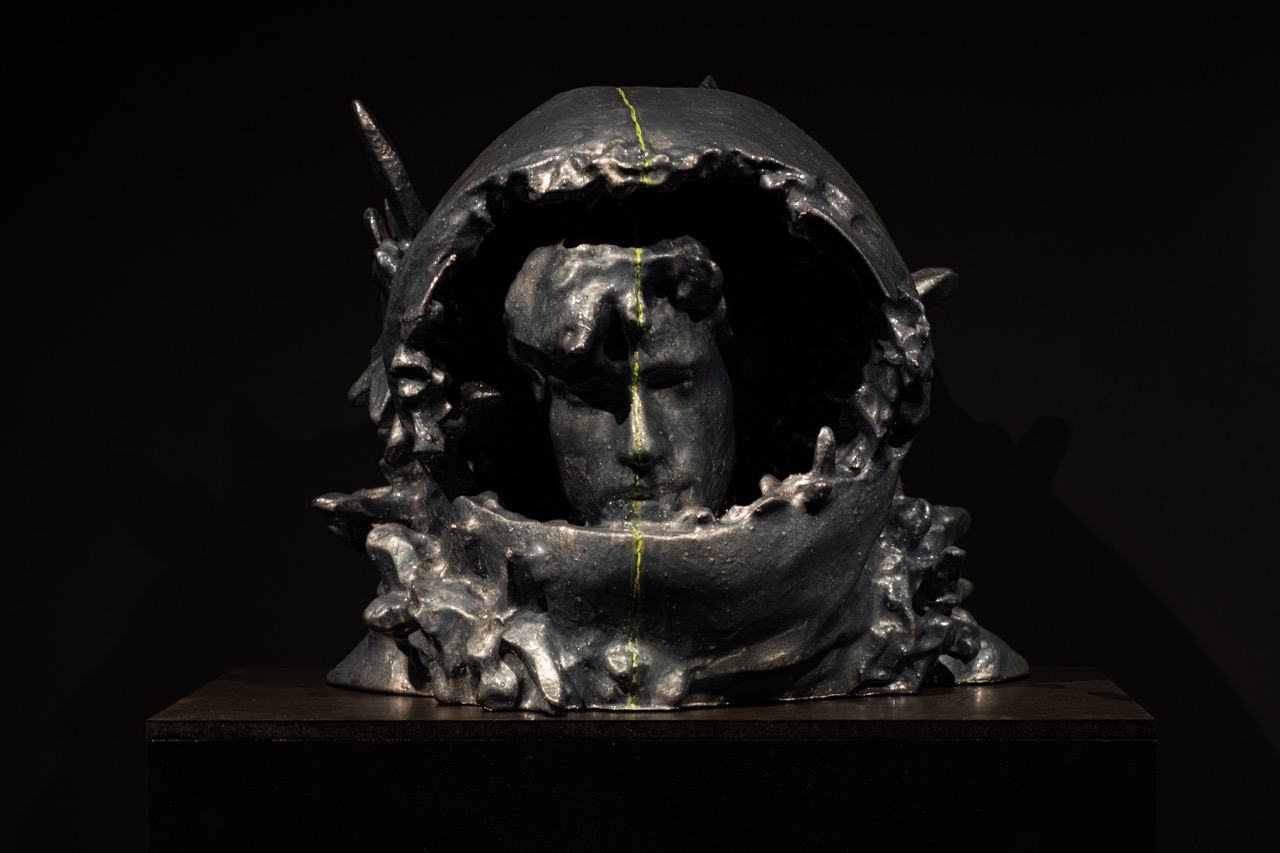
|
Untitled (Data Mix) (2021), 3D printed sculpture with post processing, 44 x 24 x 41cm Untitled (Data Mix) is the latest in Amir Fattal’s series of 3D printed sculptures based on the recombination of digital and biological data. In this case, the bust depicts the astronaut from Fattal’s film ATARA (2019), a sci-fi film shot in Berlin about the resurrection of historical memory. ATARA tells the story of two buildings that used to stand at the same place: the Berliner Stadtschloss, destroyed by Allied bombing in WWII, and the Palast der Republik, built in its place as the GDR seat of government in 1973, and destroyed amidst much controversy in 2008 to make way for the rebuilding of a contemporary copy of the Stadtschloss. The resurrection of this historical copy did not begin until 2013 due to the controversy surrounding this project, and opened to the public in its new incarnation as the Humbold Forum, Berlin’s newest museum, in the midst of the pandemic in 2021. Filmed while this building was still a construction site, ATARA follows a ceremony that takes place in the Palace during a moment when one building is being resurrected and the other building is dematerializing into a ghostly memory. Following an astronaut wandering through the construction site of the new Stadtschloss, carrying an iconic lamp from the destroyed Palast der Republik, ATARA deals with the collective memory of architecture and its symbolic representation in public space. In a city perpetually treading the fine line between moving on from its painful history while never forgetting it, the decision to resurrect the Stadtschloss in order to move and consolidate all Berlin’s ethnographic and history of science museums, is interpreted by many as a willful erasure of its GDR past and a dangerous rewriting of history. This controversy is keenly felt in a city still building over its bomb craters, even more than 75 years after the end of WWII. “Untitled (Data Mix) is part of a series of 3D printed sculptures which combine the digital data of organic and natural elements in a form of 3D scans, together with generated 3D elements that create a new hybrid. In the process of turning these models into a physical object via 3D printing, the organic form goes into a new orientation process that takes into consideration the building up of physical material and its gravity in the ‘real world’, as opposed to the digital realm where anything is possible. The axis of the 3D printer becomes a point of reference in the creation and placement of the objects in space.” – Amir Fattal |
Amir Fattal (b. 1978 in Tel Aviv, Israel. Lives and works in Berlin, Germany.) Fattal is a conceptual artist whose practice is one of historical reflection grounded in the history of aesthetics and cultural schisms. Working in the media of video, photography, sculpture, and installation, his work forms a focused response to the diverse questions raised by his adoptive city of Berlin, where the memory, culture, architecture, indeed every thread in the fabric of this city is problematized by its history. Alongside his art practice, Fattal is the curator of Tape Modern Berlin, an acclaimed series of group exhibitions featuring emerging and established artists. Amir Fattal was distinguished with the GASAG Art Prize in 2008 and graduated from Universität der Künste, Berlin, in 2009. Fattal has participated in numerous international group exhibitions. Acclaimed solo exhibitions include: Mesopotopography, Anna Jill Lüpertz Gallery, Berlin (2015); From the End to the Beginning, Kunstquerier Bethanien, Berlin (2014); Parallel Lines, Teapot Gallery, Cologne, Germany (2013); Goral Ehad, St-art, Tel Aviv, Israel (2012); Shadow of Smoke Rings on the Wall, Artitude Kunstverein, Berlin (2011); Tomorrow Gets Me Higher, Wilde Gallery, Berlin (2010). Selected group exhibitions include: Future Life Handbook, Redtory Museum of Contemporary Art, Guangzhou, China (2017-18); Collection Enea Righi, Museo Fortuny, Venice (2016); Interior / Exterior / Sculpture, Belenius/Nordenhake Gallery, Stockholm, Sweden (2015); A Naked Singularity, Studio Garaicoa, Madrid, Spain (2015); Fragments of Empires, MOMENTUM, Berlin (2014-15); A Letter From Dr. Faustus, Herzliya Museum of Contemporary Art, Israel (2014); Fundación Botín, Villa Iris, Santander, Spain (2014); Dahlstrøm & Fattal, Beers Lambert Contemporary, London (2013); III Moscow International Biennale for Young Art, Moscow, Russia (2012); Body Without Body, Georg Kolbe Museum, Berlin (2011). |

|
Please Gamble Responsibly (2021), HD Video, 16’ Doug Fishbone’s latest video work, Please Gamble Responsibly, was made for his eponymous solo exhibition at the Crawford Art Gallery in Cork, Ireland, in the summer of 2021. Originally shown inside a vast architectural model of a derelict estate in the middle of the museum, the project was conceived as a free-wheeling meditation on money and property, inspired by the phenomenon of “ghost estates” – housing developments built during the speculative Celtic Tiger boom of the Irish property market, and left unfinished when the credit bubble fueling it ground to a halt in 2008. Such ghost estates exist the world over, while the perpetually increasing unaffordability of housing is becoming equally ubiquitous. As the gap between rich and poor perpetually widens, and money, in its many new digital incarnations, becomes more and more conceptual, Fishbone puts his finger on the pulse of what is, apart from the COVID pandemic, becoming one of the greatest emergencies in the western world. And particularly in Berlin, where anti-gentrification protests are practically a daily occurrence, and where the city government’s attempts to stop speculation development are repeatedly overturned at the federal level, Please Gamble Responsibly takes on a keen resonance. “Please Gamble Responsibly examines how instability and collapse are coded into the very way modern money works – from the Nixon Shock in 1971 to the ongoing corporate bailouts of today – and unmasks a global economic system which is far dodgier than it seems. The film treats a populist and relevant subject – the unaffordability of housing in much of the Western world – from an unexpected and humorous vantage point.” – Doug Fishbone
|
Doug Fishbone (b. 1969 in New York, USA. Lives and works in London, England.) Described as a “stand-up conceptual artist”, Doug Fishbone’s work is heavily influenced by the rhythms of stand-up comedy. Fishbone examines some of the more problematic aspects of contemporary life in an amusing and disarming way, using satire and humor in his films, performances and installations to critically examine consumer culture, mass media, and the relativity of perception and context. In his video and performance practice, he uses images found online to illustrate and undermine his own confrontational monologues on contemporary media and its corollary, the underground and avant-garde. Fishbone’s conceptual practice is wide-ranging, using many different forms of popular culture in unexpected ways. He earned a BA from Amherst College in the US in 1991, and MA in Fine Art at Goldsmiths College, London in 2003, and was awarded the Beck’s Futures Prize for Student Film and Video in 2004. Selected solo exhibitions include: Tate Britain, London (2010-11), Rokeby, London (2010-11, and 2009), Gimpel Fils, London (2006) and 30,000 Bananas in Trafalgar Square (2004). Selected group exhibitions include Rude Britannia: British Comic Art, Tate Britain (2010), Busan Biennale, Busan, South Korea (2008); Laughing in a Foreign Language, Hayward Gallery (2008), London; British Art Show 6, Newcastle, Bristol, Nottingham and Manchester (2006). Fishbone’s film project Elmina (2010) was premiered at Tate Britain in 2010, and was nominated for an African Movie Academy Award in Nigeria in 2011. Other notable projects include: the Mayor of London’s Thames Festival, London, UK (2013, 2014), and the Look Again Festival, Aberdeen, Scotland (2016). He curated Doug Fishbone’s Leisure Land Golf at the 56th Venice Biennale (2015), and realised his solo project Made in China at the Dulwich Picture Gallery, London (2015). Artificial Intelligence was commissioned by Werkleitz Festival, Halle, Germany (2018); and he showed a specially commissioned video The Jewish Question in the exhibition Jews, Money, Myth at the Jewish Museum, London (2019). Fishbone teaches and performs at major international and UK venues, including: the Hayward Gallery, ICA London, the Southbank Centre, Hauser and Wirth Somerset, and the Royal Academy. Fishbone is a member of the Board of Trustees of the Yinka Shonibare Foundation, an organization which fosters international cultural exchange. |
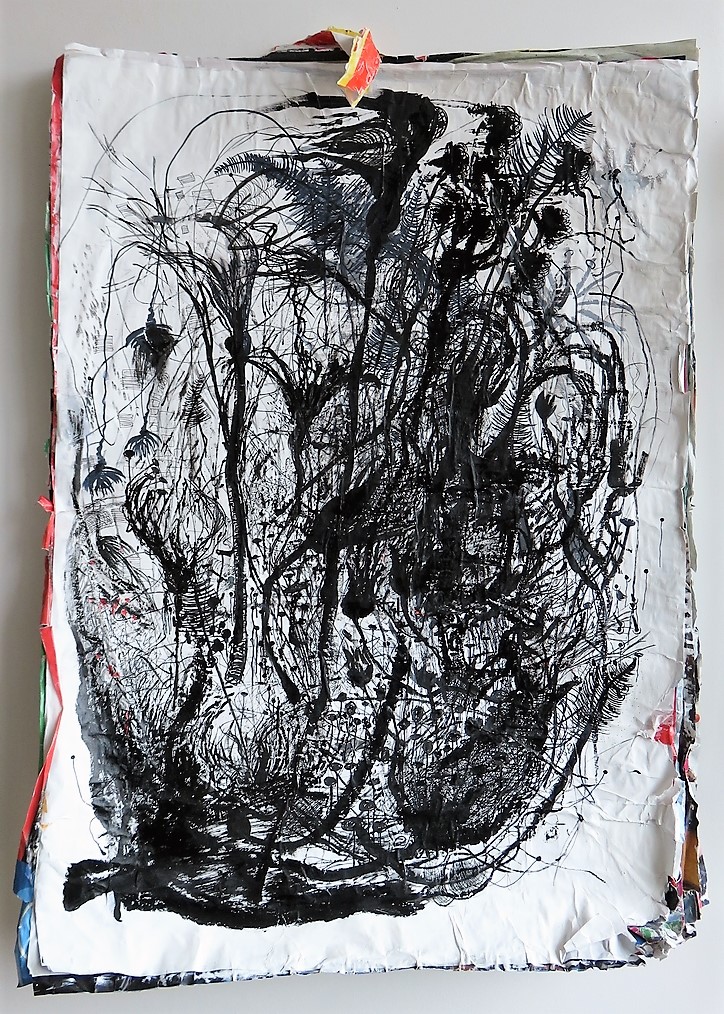
|
N8 – Carbonic Incineration 1 (2021), tissue culture oil, ink, acrylic and gesso on pasted street signs, 85 x 60 x 5cm On the streets of the city of Berlin, street posters are piled up on the walls, one on top of the other, glued together with paste. Some promote a new hamburger, others a musical concert, a home delivery app or an express covid test service. The stacking of posters creates a volume that, with the passing of days, is destined to disappear: a downpour falls on the city and they become so heavy that they bend like a withered flower, or someone tears them off as a souvenir or innocuous form of vandalism, or the city council removes them when it performs its regular cleaning. In her laboratory, a Polish scientist, under a microscope, places a number of cells on a substance that is used for their proliferation. Cells will begin to reproduce slowly, then quickly, until they meet their limit and begin to shrink. It is difficult to distinguish when or what the maximum point was before beginning their decrease, in search of their own balance. Hanging on the wall, on the whitened surface of a pile of posters, there is an unclassifiable, carbonic-looking shape that expands on the paper as if it were burning, or perhaps it contracts, as if it were submerging. – Artist Statement by Iván Buenader |
Máximo González (b. 1971 in Argentina. Lives and works in Alicante, Spain and Mexico City, Mexico.) Argentinian artist Máximo González is widely known for his massive immersive mixed-media installations, as well as large-scale collages made out of money. The currency collages, reminiscence of the political wall paintings of the Mexican muralists, express the complications of a consumer culture that exploits natural resources, produces waste, and lately drives nations to bankruptcy. González’s work – often poetic, always political – focuses on the environment, education, and the evolution of cultural value systems. González has held 46 solo shows and participated in 168 group shows. Selected solo exhibitions include: ‘POGO’ at Hospicio Cabañas Museum, Guadalajara (MX); Magnificent Warning at Stanlee & Rubin Center, El Paso (USA); Playful, CAFAM, Los Angeles (USA); ‘Walk among Worlds’ at Casa de América, Madrid (ES) y Fowler Museum, Los Angeles (USA), ‘Something like an answer to something’, Artane gallery, Istanbul (TUR); ‘Project for the reutilization of obsolete vehicles’ at Travesía Cuatro Gallery, Madrid (ES) and Project B, Milano (IT); ‘PISAR’ at Ruth Benzacar, Buenos Aires (ARG); ‘Greenhouse effect’ at Art&Idea, Mexico City. Selected group shows include: ‘The Supermarket of Images’ at Jeu de Paume in Paris and at Red Brick Art Museum in Beijing, China; ‘Memoria del porvenir’, MUSAC collection (Museo de Arte Contemporáneo de Castilla y León), Spain; Viva México! at Zacheta National Gallery of Art in Warsaw and at BWA Awangarda Gallery, Wroclaw, Poland; ‘The possibility of everything’ at Nuit Blanche Toronto (CA); ‘Where have all the flowers gone?’, Poetics of the handmade exhibition at MOCA LA (USA); ‘The tree: from the sublime to the social’ at the Vancouver Art Gallery (CA); ‘Fine Line’ at Museo de Las Americas in Denver (USA); The lines of the hand at MUAC, Mexico City; ‘2nd Polygraphic Triennial of San Juan’, Latin America and the Caribbean, Puerto Rico; ‘Mexico: Poetry/Politics’, San Francisco State University (USA) and at Nordic Watercolor Museum, Gothenburg (SE); ‘Tiempo de Sospecha’, Museum of Modern Art, Mexico City. Máximo González is also the founder of “Changarrito Project”, a non-profit cultural initiative he launched in 2004 in Mexico City. What began as an underground subversive project has evolved into a platform to promote, support and show the work of visual artists, novelists, poets, curators, designers, performers, filmmakers, which has so far has exhibited more than 5,000 works by more than 350 emerging artists. Changarrito was invited twice to participate at Mexico Pavilion in the Venice Biennale (2011 and 2013), and has, since 2012 been operating in cooperation with Mexic-Arte Museum (Texas, USA). |
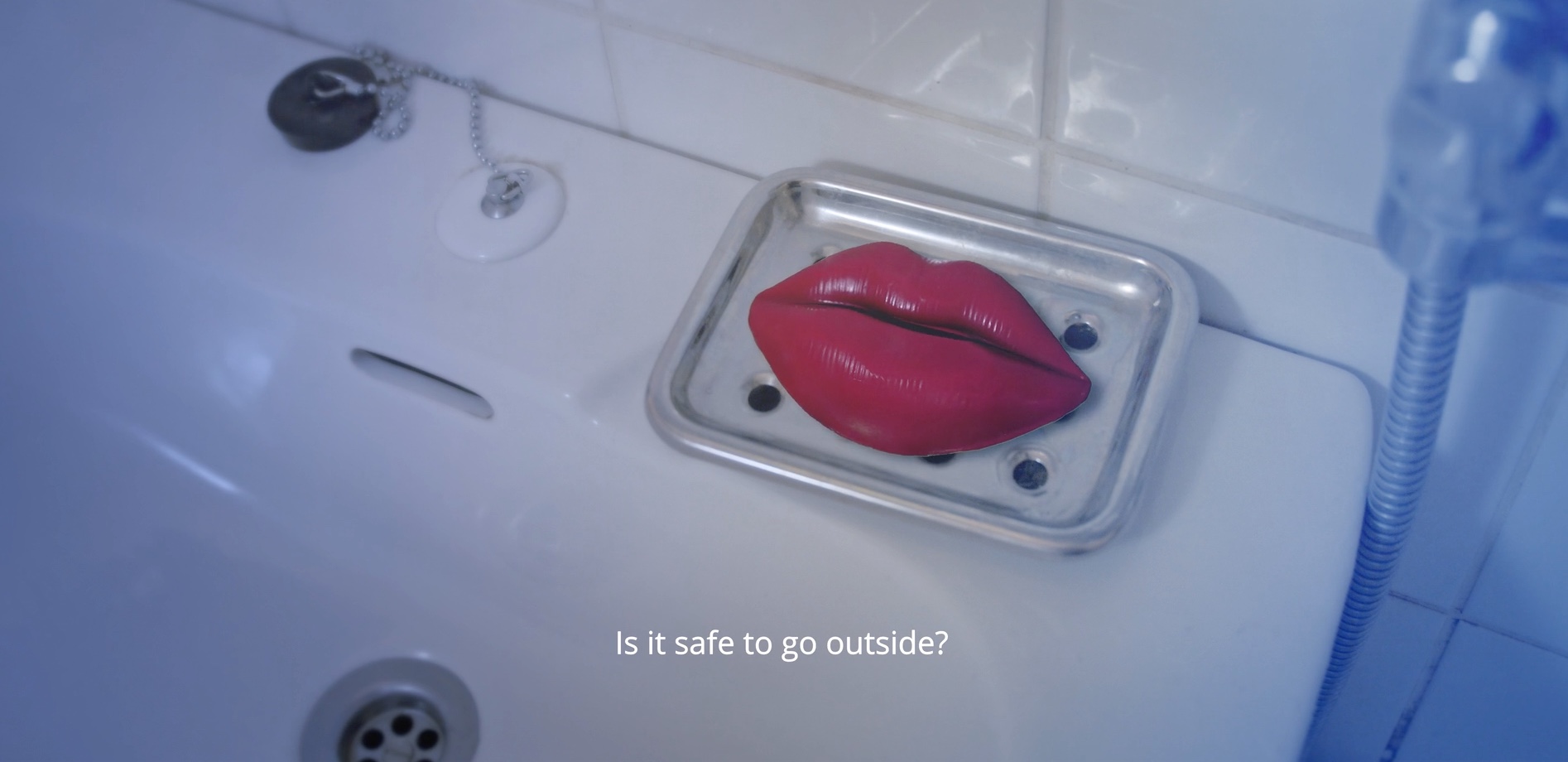 Daemon (2020), 4K video, 12’ |
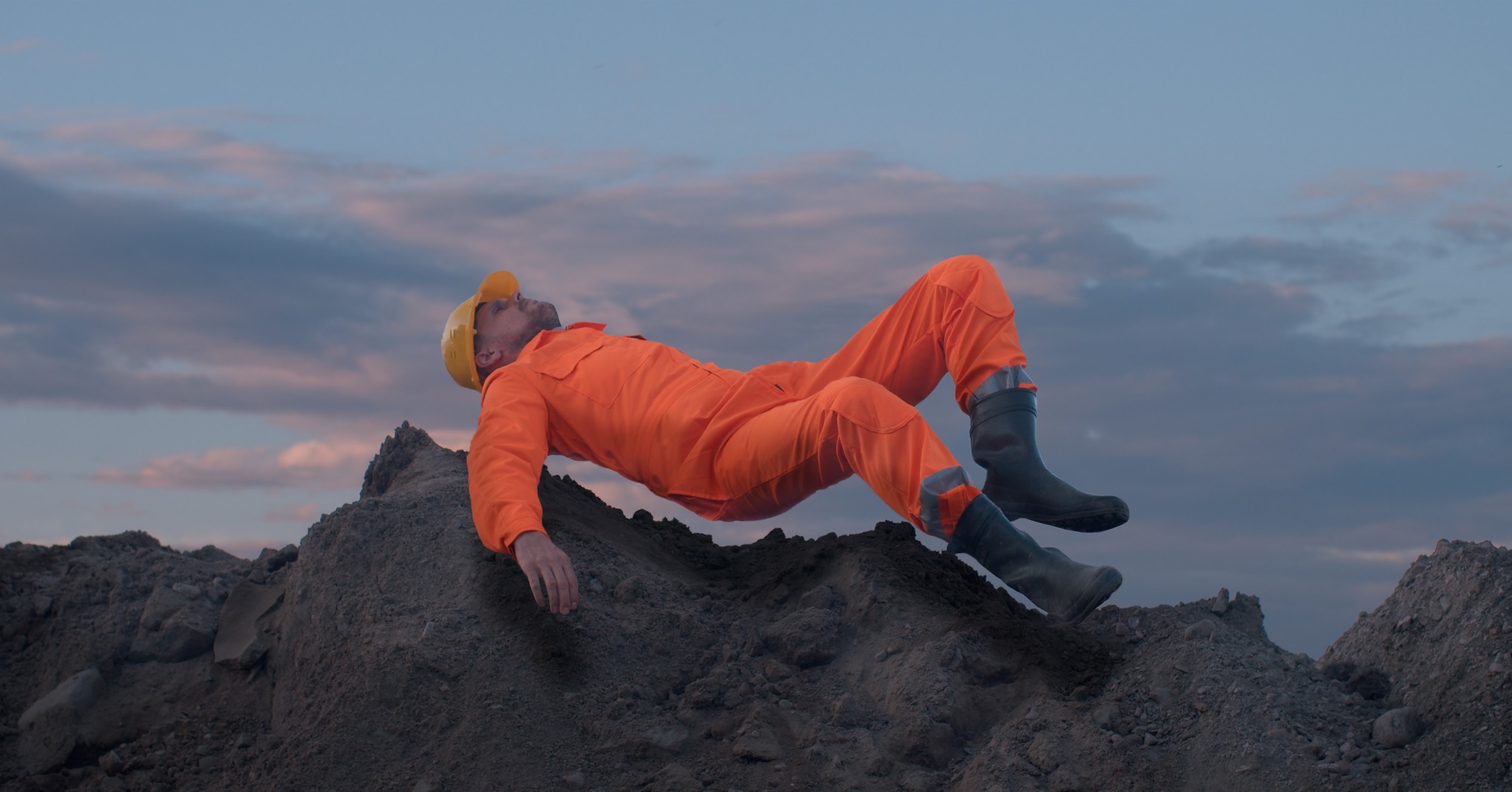 Luxe (2021), visual album, 7 tracks of original music with video, 45’ |
|
“Daemon (Greek: daimon, guardian spirit) stems from reflections on the future of humankind and its relationship with nature. Karjalainen’s film navigates the ground between real and unreal, abstract and absurd as it unravels online comments of trolls criticising climate action. Running on the logic of a dream or a nightmare, the film stirs thoughts about the future of humankind. Will we be able to act as a united front in the face of a disaster or will we become paralysed, waiting for some supernatural force to step in?” – Hannu Karjalainen |
“The underlying question behind the visual album Luxe was to ask what is the role or the responsibility of the artist in these times and whether art is just luxury when the world is literally burning. The videos elaborate on this concept and bring different perspectives to the underlying theme: climate change and the uncertain future of our planet. I view this work as a collection of audiovisual essays that each take a slightly different approach and point of view on the subject and related themes, like the idea of infinite economic growth, estrangement from nature, inequality, consumerism and the future of humankind on this planet in the first place. Some videos may be more matter-of-fact, like the opening video A Hidden Star with the shapeshifting suitcase. Some others are more surreal or dreamlike (perhaps nightmarelike). The Silkworms video features names of recently extinct species but abstracted in the way that they can’t be read.” – Hannu Karjalainen |
Hannu Karjalainen (b. 1978 in Finland. Lives and works in Helsinki, Finland.)
Hannu Karjalainen is an award winning visual artist, filmmaker photographer, and composer based in Helsinki, Finland. Karjalainen develops his video practice from a grounding in photography and his training in the Helsinki School at Alver Alto University, Finland. Karjalainen’s experimental films, video installation work, photography and sound art have been shown in numerous exhibitions in Finland and internationally, including: UMMA University of Michigan Museum of Art, International Biennale of Photography Bogota, Scandinavia House New York, Fotogalleriet Oslo and Kiasma Museum of Contemporary Art Helsinki. Karjalainen won the main prize at the Turku Biennial in 2007, and was chosen as Finnish Young Artist of the Year in 2009. Karjalainen’s latest album LUXE was released by Berlin based Karaoke Kalk in late 2020. Karjalainen has collaborated with Simon Scott (of Slowdive), Dakota Suite and Monolyth & Cobalt among others.
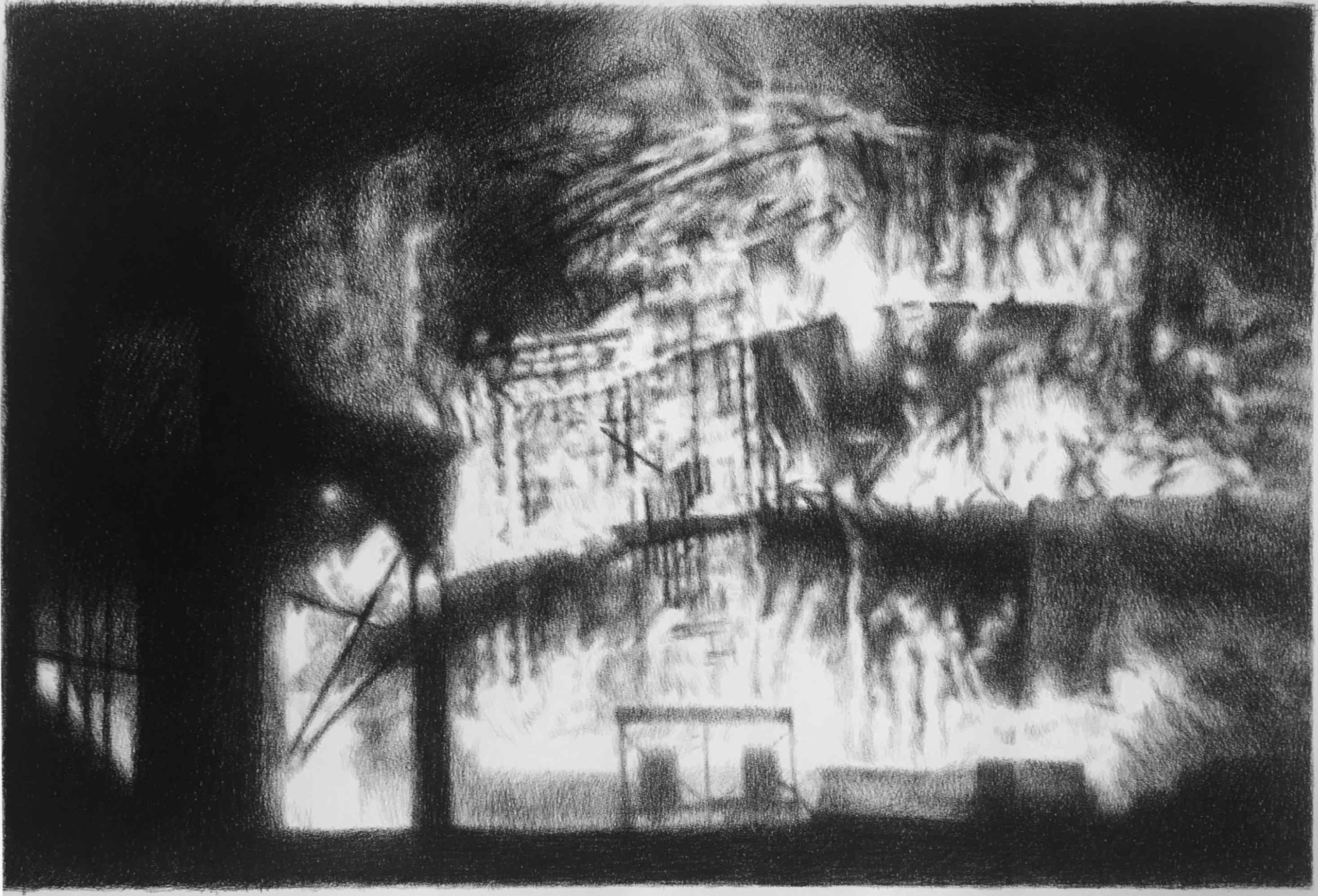
Burning (2021), pastel on paper, 62 x 92cm (85 x 115cm with frame)
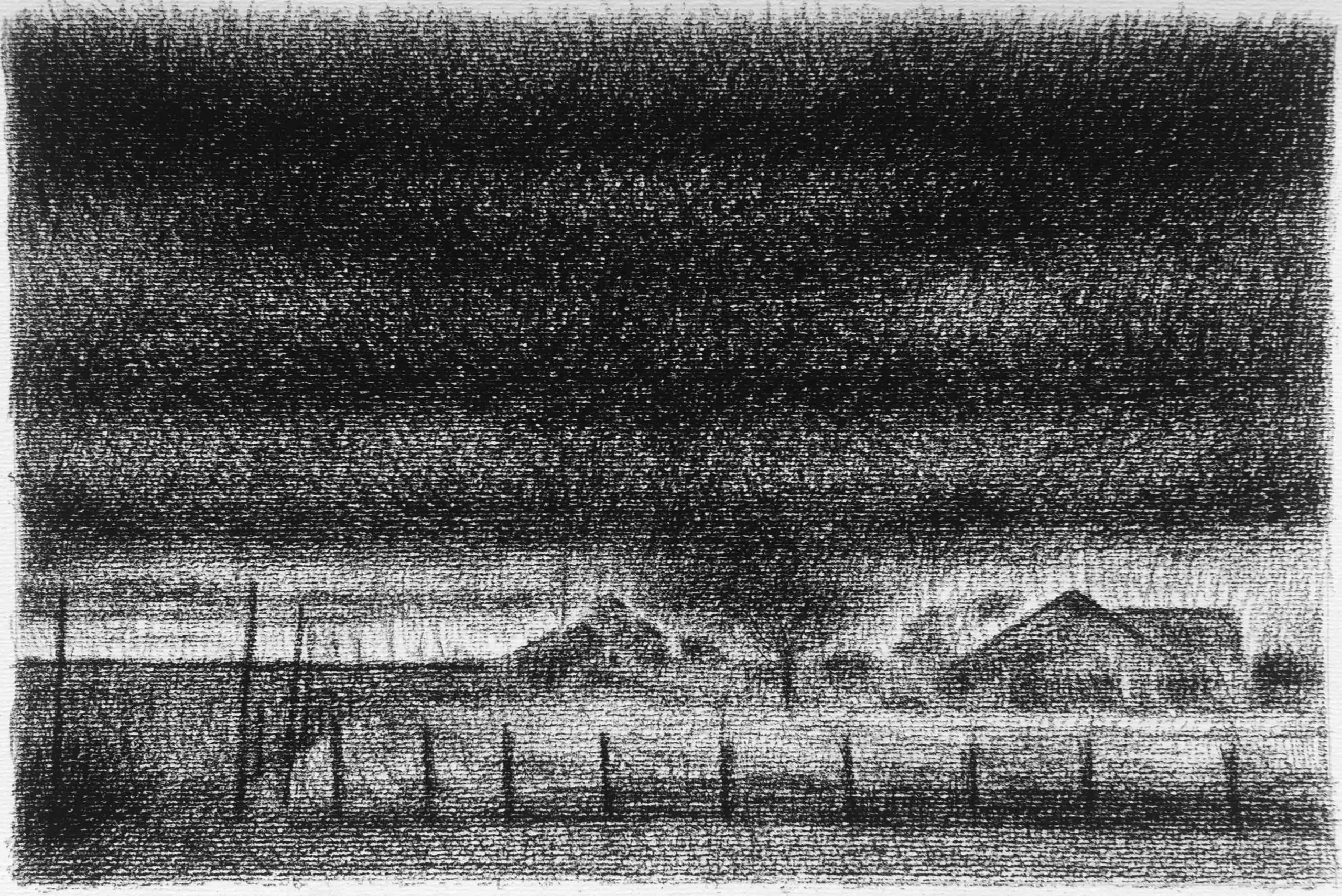
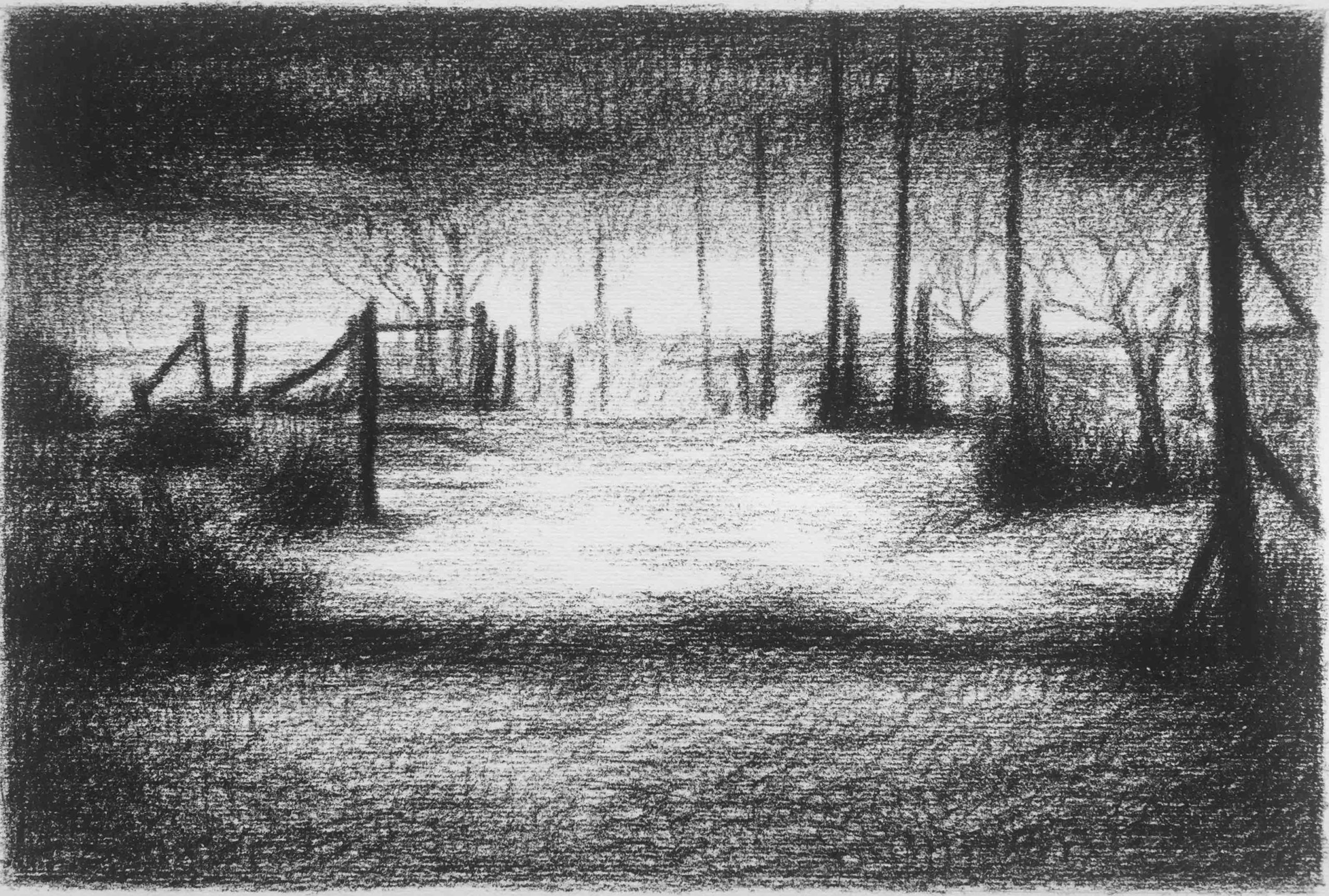
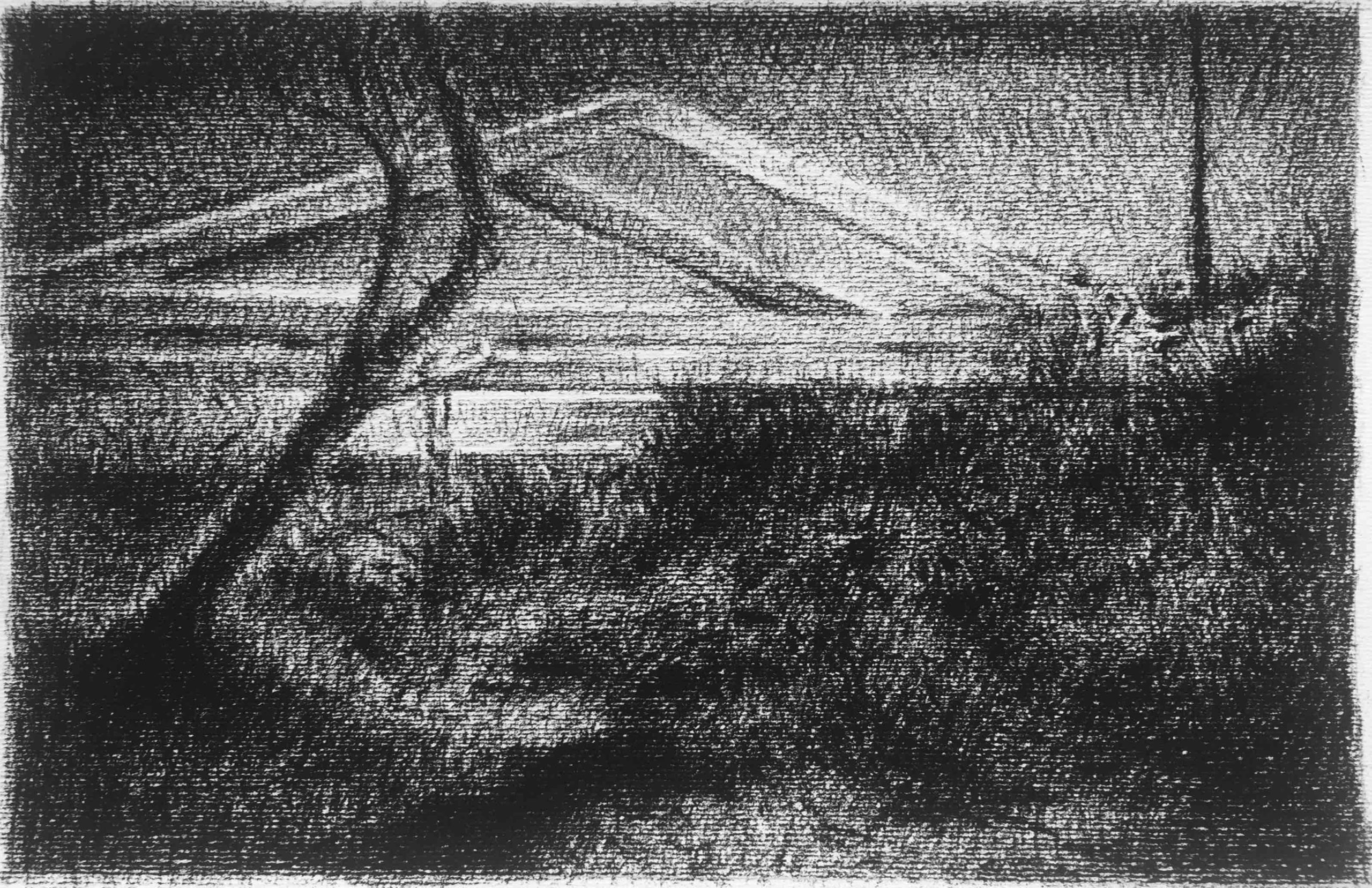
Untitled (2020), 3 drawings, pastel on paper, 18 x 28cm (30 x 40cm with frame)
|
“Gone With the Wind (1939) is a movie that has now been condemned for its racist depiction of the American South. For the drawing Burning (2021) I have chosen a still from Gone With the Wind of the burning of Atlanta, one of the pivotal moments in the film that most strongly condemns the civil war. Without the characters and taken out of their context, these images of burning buildings also take on new associations and resonate with images from the Black Lives Matter protests against racism and police brutality in the summer of 2020, but also the fires that happened in California and Australia, due to the unnatural rise in temperatures through climate change. The three Untitled works are part of an ongoing series based on stills from the movie The Wizard of Oz. All stills are from the initial 18 minutes of the film, the part in sepia taking place in a studio-recreated rural Kansas before the action is transported to a technicolored Oz. By eliminating all the characters, these landscape drawings create new associations for the viewer, taking on a haunted atmosphere of deserted and abandoned places. These lonely and abandoned spaces become a visual metaphor for the collapse of our civilization, our environment and economic system.” – David Krippendorff |
David Krippendorff (b. 1967 in Berlin, Germany. Lives and works in Berlin.) David Krippendorff is a US/German interdisciplinary artist and experimental filmmaker. He grew up in Rome, Italy, and studied art at the University of Fine Arts in Berlin, where he graduated with a Masters degree in 1997, and was subsequently based in New York for some time. The son of a Holocaust survivor and the grandchild of practicing Nazis, cultural contradiction and dislocation shaped Krippendorff’s experience early on. His artistic practice inquires into this state of being a “permanent foreigner” and explores resulting questions of home, national and cultural identity, and belonging. Krippendorff’s works, films and videos have been shown internationally, including at: the New Museum (New York), ICA (London), Hamburger Kunsthalle (Hamburg), Museum on the Seam (Jerusalem). He has participated in four Biennials (Prague, Poznan, Tel Aviv, and Belgrade), as well as in many international art and film festivals worldwide. |
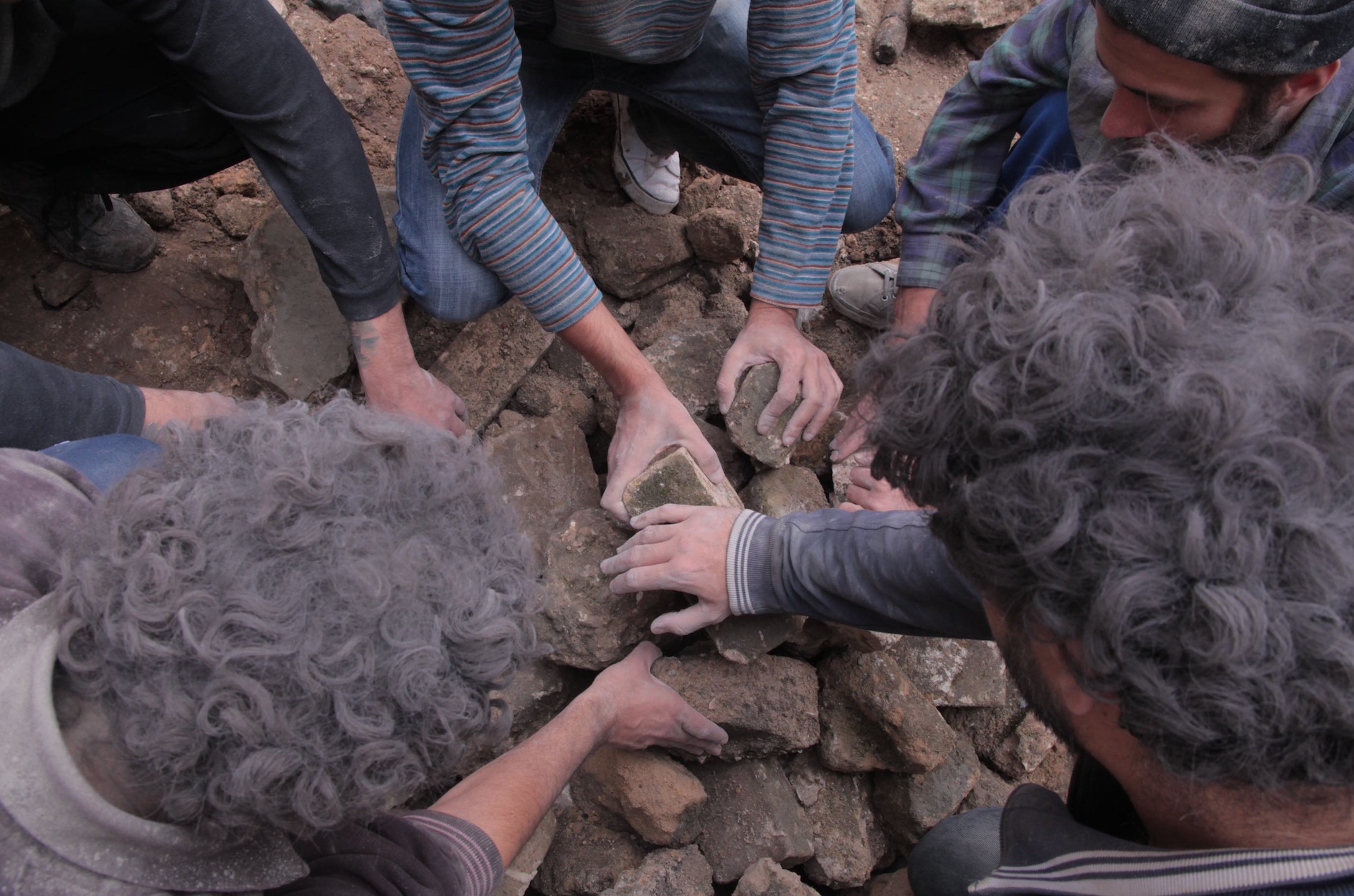
|
Dig (2020), HD Video, 5’32” “In the video Dig you can see a group of young men working hard trying to dig out heavy stones. It is not clear where this action takes place. It might be a ruin house after an earthquake or maybe this house was bombed. The men look very stressed and they keep on working and digging out the stones. The action repeats itself in a never ending loop and the beholder never knows what is the reason they are digging, or will they ever find something. This action becomes more and more familiar to the beholder as he might seen it on the news it becomes part of our life but usually it happens in a faraway place.” – Shahar Marcus |
Shahar Marcus (b. 1971 in Petach Tikva, Israel. Lives and works in Tel Aviv, Israel.) Shahar Marcus primarily works in the medium of performance and video art. His initial works dealt with the exploration of his own body and its limitations – incorporating various perishable materials, such as dough, juice and ice. His body served as an instrument, a platform on which various ‘experiments’ took place: lying on the operating table, set on fire, dressed in a ‘bread suit’, and more. His recurrent use of bread as a symbol of essentiality and survival is juxtaposed with military symbols. By frequently working with food, a perishable, momentary substance, and by turning it into a piece of clothing or a set, Marcus also flirts with art history; transforming arbitrary objects and materials into something immortal and everlasting. His most recent works deal with local political issues, by approaching iconic Israeli landmarks with a critical and humorous point of view. Marcus reflects on his own heritage, environment and the creation of local historical narratives. His works are influenced by the visual language of cinematography along with familiar themes and tributes to the history of art. Shahar Marcus studied Linguistics and History of Art at the University of Tel Aviv. He has exhibited at numerous art institutions, both in Israel and internationally, including: Tate Modern, London; The Israel Museum, Jerusalem; Tel Aviv Museum of Art; Petach Tikva Museum of Art; Copenhagen Kunsthalle; Moscow Biennale; Poznan Biennale; Moscow Museum of Modern Art; The Hermitage, Saint Petersburg; and at other art venues in Poland, Italy, Germany, Georgia, Japan, USA, and Turkey. His works are in many important museum collections, such as: The Israel Museum, Jerusalem; Tel Aviv Museum of Art; Petach Tikva Museum of Art; and others. |
|
Messenger Irma / Messenger Dora / Messenger Megi / Messenger Maria / Messenger Mangkhut, [Barcode: Commodity Dream], (2021), The five prints shown in this exhibition are digital studies for a series of five large paintings (each 300 x 200 cm) from Marković’s conceptual practice of Barcode Paintings, with which he has been working since 2008. This body of work consists of stripes that signify written words, often intertwined with visual imagery. Barcodes are the product of a systematic process of codification, at the end of which only a rhythmic series of vertical lines remains. Every text can be translated into a barcode and thereby enter the system of global trade. It is possible to scan the bar code with a laser reader or a smartphone app to decode its meaning. Marković’s seemingly abstract images can thus be translated into concrete content. Marković’s Messengers series is composed of spatial images that, by means of abstract coding, thematize the relationship between environmental destruction through climate change, toxic pollution, current and historical economic interests and their impact on the planet Earth. The five prints consist of barcodes intertwined with satellite images of hurricanes and typhoons which have hit various geographical regions since 2010. Each of these works is composed of an interwoven matrix of barcode and meteorological satellite image of a natural disaster. The barcodes embedded in these works translate to the term “Commodity Dream”. While the titles of the works, taken from the sweetly innocent female names given to these hurricanes and typhoons by the World Meteorological Organization, form a stark counterpoint to the harsh truths and tragic aftermath of such natural disasters.
This body of work conceptually and visually addresses the effects of climate change leading to super-storms and massive fires (which the artist has experienced in recent years in Australia), resulting in damage, death and displacement on a massive scale. This environmental devastation is a consequence of the climate catastrophe resulting from humankind’s mistreatment of the planet which sustains us; a vicious cycle pulling us ever closer to the brink of disaster. Driven by human greed and anomalous management of resources, large geographical areas of healthy nature are disappearing from the face of the Earth due to economic colonization and ecocide by aggressive corporations. The Messengers series addresses how the profit-oriented focus of humanity is a disastrous commodification of the world. If things continue as they are, human greed will turn our planet into a consumed good, like any other commodity. – Milovan Destil Marković
Milovan Destil Marković (b. in 1957 in Čačak, Serbia. Lives and works in Berlin, Germany.) Milovan Destil Marković is a conceptual artist whose practice spans installation, painting, performance, and video. Marković studied painting at the Faculty of Fine Arts at the University of Arts, Belgrade, where he graduated in 1983. Defining himself as a conceptual painter, Marković has exhibited extensively in Europe, Asia, Australia, and in the Americas. His work was featured in the 42nd Venice Biennial (Aperto ’86); 4th Istanbul Biennial; 46th Venice Biennial; 6th Triennial New Delhi, India; the 56th, 49th, 24th October Salon, Belgrade Biennale; 2018 Lorne Sculpture Biennale; Hamburger Bahnhof Museum of Contemporary Art Berlin; Museum of Contemporary Art Kumamoto; MoMA PS1, New York; Moderna Museet, Stockholm; Ludwig Museum, Budapest; Saarland Museum, Saarbrücken; The Artist’s Museum, Lodz; National Museum, Prague; Museum of Contemporary Art, Belgrade; MSURS Museum of Contemporary Art, Banja Luka; Landesmuseum Graz; Kunstmuseum Düsseldorf; Museum of Modern Art, Ljubljana; National Gallery, Athens; Art Museum Foundation Military Museum, Istanbul; KW Institute for Contemporary Art, Berlin; Kunstverein Hamburg; Kunstvoreningen Bergen; Kunstverein Jena; Galleri F15 Oslo; Nishido Contemporary Art, Tokyo; Fei Contemporary Art Center, Shanghai; the art program of the European Capitol of Culture Novi Sad; and many other notable institutions. Marković’s works are held by numerous public and private collections throughout the world, including: Contemporary Art Museum, Kumamoto, Japan; Neuer Berliner Kunstverein, Berlin, Germany; Museum of the City of Belgrade, Serbia; Istanbul Art Museum Foundation, Istanbul, Turkey; Museum of Contemporary Art, Belgrade, Serbia; Kunstmuseum Düsseldorf, Germany; Landesmuseum Joanneum, Graz, Austria; The Artists’ Museum, Lodz, Poland; MOMENTUM, Berlin, Germany; amongst others. |

|
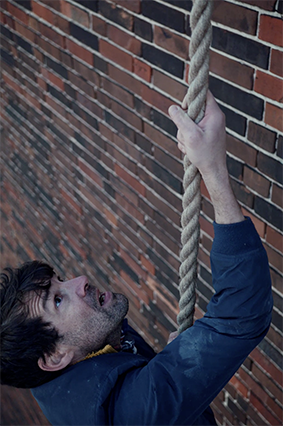
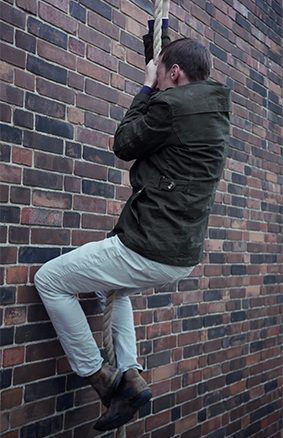
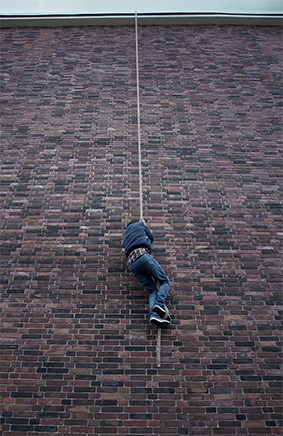
|
ZWEI (2021), video performance, 5’09” “This installation tells the story of two men bound together in a relationship of dependence but it can also be read as a social metaphor as individuals, communities and societies have always been linked to each other by a relationship of mutual dependence, where, in a conscious or unconscious way, one person’s action has an impact on the other, even if this does not result always evident. The work consists of a vertically mounted wall monitor and shows a very high wall. From the upper edge of the wall hangs a rope that falls along both sides of the wall. A man hangs from each end of the rope. The two men do not seem to know each other’s presence, because each in his own way is busy fighting not to fall. Several meters separate them both from the ground and the top. From time to time the two men look frightened downwards and upwards, then try to climb up, without success. If one pulls the rope towards himself, the other is pulled slightly upwards.” – Christian Niccoli  |
Christian Niccoli (b. 1976 in Südtirol, Italy. Lives and works in Berlin, Germany.) Christian Niccoli’s videos and video installations have been presented internationally in museums and institutions, among others at: Kunsthaus Graz, Graz, Austria (2006); Phönix Art – Harald Falckenberg Collection, Hamburg, Germany (2002); Cinémathèque québécoise, Montreal, Canada (2015); Berlinische Galerie, Berlin, Germany (2012); Haus der Kulturen der Welt, Berlin, Germany (2009,2004); 8th Baltic Biennial of Contemporary Art, Szczecin, Poland (2009); 4th Biennial del Fin del Mundo Valparaiso, Chile (2015); Armenian Center for Contemporary Experimental Art, Yerevan, Armenia (2010); Musée de la Chasse et de la Nature, Paris, France (2015), Museion – Museum für Moderne und Zeitgenössiche Kunst, Blzano, Italy (2020); Museum Kunst der Westküste, Alkersum, Germany (2020); Alfred Ehrhard Stiftung, Berlin (2021). Christian Niccoli’s works are in several public collections, including; the Museum of Contemporary Art in Szczecin, Poland; Kunstsammlung der Autonomen Provinz Südtirol, Italy; Collezione Farnesina – Ministero degli Affari Esteri, Rome, Italy; and Museion – Museum of Modern and Conemporary Art, Bolzano, Italy. Niccoli’s works have been presented at several festivals, including: Transmediale, Berlin, Germany (2009); Hamburg Short Film Festival, Hamburg, Germany (2008); Oblíqua – International Exhibition of Video Art & Experimental Cinema, Lisbon, Portugal (2016); 16th WRO Media Art Biennale, Wroclaw, Poland (2015); Stuttgarter Filmwinter, Stuttgart, Germany (2015); Athens Digital Arts Festival, Athens, Greece (2015); Facade Video Festival Plovdiv, Bulgaria (2014); and Video Art Festival Miden, Kalamata, Greece (2014). In 2006 Christian Niccoli was an artist in residence at Cittadellarte – Fondazione Pistoletto in Biella, Italy, and in 2008-09 he participated in the International Studio Program at Künstlerhaus Bethanien in Berlin, Germany. |

|
Chronicles of Extinction (2021), print on paper, 12 books from an ongoing series, 30.5 × 68 cm Chronicles of Extinction marks the start of a new series of work for Kirsten Palz, while remaining true to her conceptual practice of “Sculpture as Writing”, encompassing her manuals, songbooks, and other text-based works. The 12 books, shown here, from the ongoing series Chronicles of Extinction, are a cry against the ecological devastation mankind is wreaking upon our planet; they are a song of mourning for the disappeared and still disappearing species that once inhabited this earth with us; a needed reminder; a sad farewell. Chronicles of Extinction consists of twelve individual editions that form the beginning of an ongoing archive. Each of the twelve editions lists twelve extinct species. The applied scientific classification system compiles information on kingdom, phylum, class, order, family, genus and species for each extinct member:
VOID 01 ACTINOPTERYGII ray-finned fishes Each extinction creates a void. Each extinction is irreversible. |
Kirsten Palz (b. 1971 in Copenhagen, Denmark. Lives and works in Berlin, Germany.) Kirsten Palz, born 1971 in Copenhagen, Denmark, is a visual artist working in Berlin. She holds a degree in Computer Science from the IT-University in Copenhagen and a degree of Fine Arts/ Painting from School of Visual Arts in New York City. In 2007, Kirsten Palz initiated her ongoing archive of manuals. The archive is a work in progress consisting today of 410 manuals, including objects, prints on paper and drawings. The manuals engage with various topics, such as dreams, memories, myth, sculpture and social space. These works are elementary entities; the manual, the score, the playwright, the architectural plan, the choreography ect. They exist before the performance, before the realisation, before the show. It is a speculative open process for new actors; be it a visitor, a curator, a collective, an actor, a director or a performer. Each time they are acted out or realised they add a new layer to their existence. Everyone is invited to engage. Kirsten Palz has shown her works in wide range of spaces in Germany and abroad. Recent works were presented in Points of Resistance with MOMENTUM at the Zionskirche, Berlin; F******* -Towards New Perspectives on Feminism, Neue Berliner Kunstverein (nbk) Berlin; and ff /Temporary Autonomous Zone /2/ in Galerie im Körnerpark, Berlin; amongst many others. Palz’s performances frequently take place non-officially in the Hamburger Bahnhof and the Museum für Kunst und Gewerbe, Hamburg – outside the institution’s listed program – and include readings and experimental guided tours for audiences. |
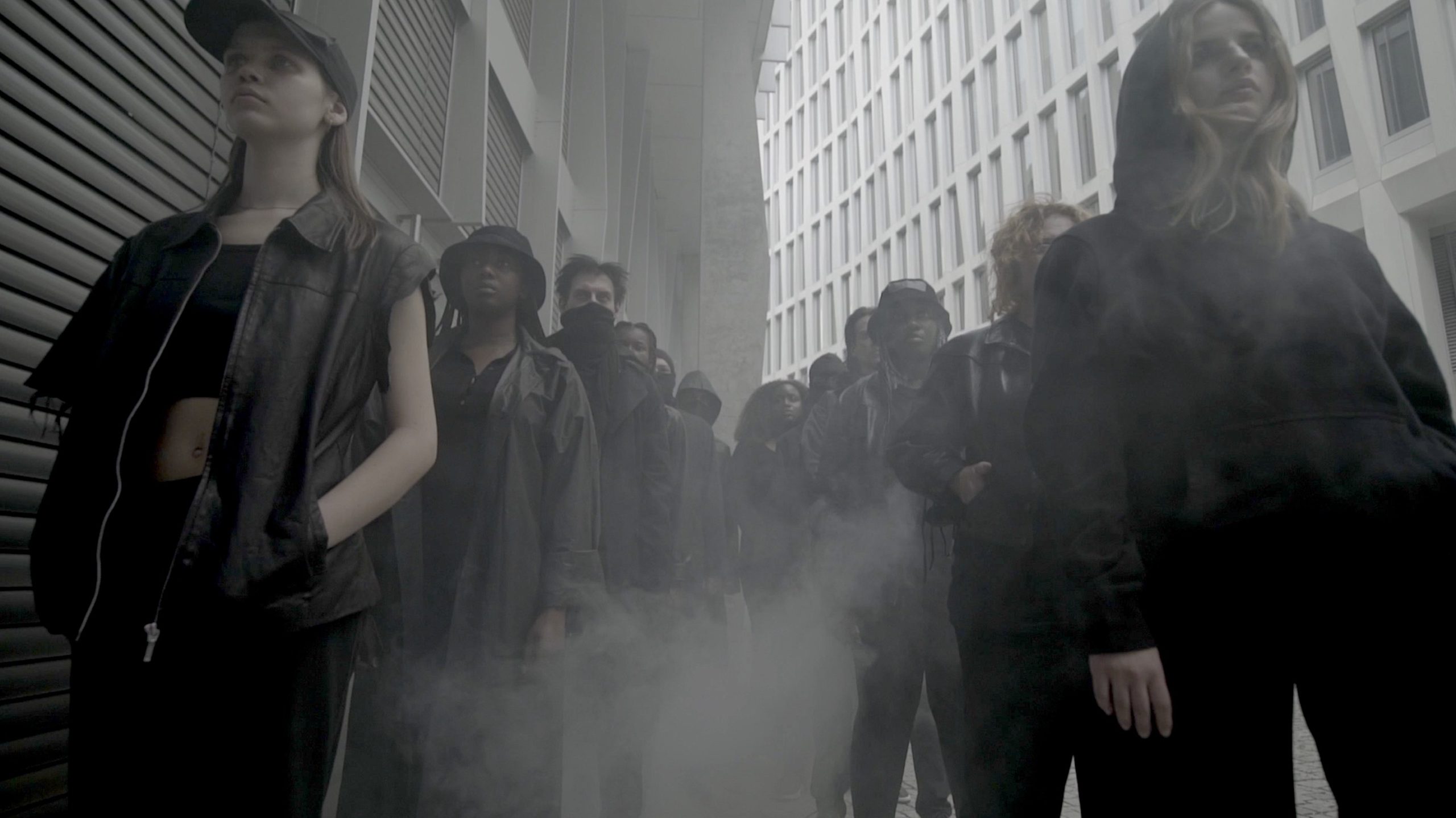
|
H A Z E C I T Y (2021), HD video, 32’57” The video work H A Z E C I T Y refers to the current discussion of climate change and what might happen in the coming years. The film raises the question: To what extent is it legitimate to use violence to force a necessary shift to prevent irreversible climate change? The philosopher Slovoj Zizek predicts that due to the shortness of time left, a radicalization of environmental activism is going to happen. Other references in the video include theories of Swedish environmental scientist Andreas Malm and environmental activist Greta Thunberg, both of whom point to the urgency of changing society by 2030. H A Z E C I T Y deals with the act of resistance in general and with the unbroken fighting spirit of political activists all over the world. The film points to historical sources for example to the German 68 movement and the American Weather Underground movement. The story of the video H A Z E C I T Y is set in the year 2027. A toxic fog often appears due to extreme pollution in cities. Fridays for Future and Extinction Rebellion are still fighting climate change. Progress has been made by corporations and politics, electric cars are mandatory, but they are basically small diversions to avoid having to make fundamental changes. Activists are increasingly frustrated that everything will stay the same. The film heroine Leocadia Haze is a lawyer who represents environmental activists in court. She stands behind the activists’ demands for a basic right to an unspoiled environment in the future. The activists are concerned with the year 2030. Something has to change fundamentally, otherwise there won’t be a “point of return” any longer. Through Leocadia’s work as a lawyer, she is committed to the law without the use of violence, but she sees the dilemma that the 68 movement already went through with the radicalization of the RAF in Germany and the Weather Underground in the US. During the night, Leocadia is out in the city looking for her little sister Nikita, who has allegedly gone into hiding. Nikita has joined a radical environmental organization that threatens violence to achieve its goals. It remains unclear whether Nikita is responsible for the fire at a corporate headquarter causing human casualties. Has Nikita become a murderer? While driving through the city at night, Leocadia has flashbacks and visions. She suffers from insomnia and a mysterious nosebleed illness caused by the city’s smog. Leocadia has a dark secret. To calm herself down, she goes swimming at night. |
Nina E. Schönefeld (b. 1972 in Berlin, Germany. Lives and works in Berlin, Germany.) Nina E. Schönefeld is a multidisciplinary artist who studied Fine Art in Berlin at the Universität der Künste, and in London at the Royal College of Art. She holds a Master of Arts and a PhD in Art Theory. For several years she has been lecturing at private art colleges in the field of visual arts. She is the co-founder of “Last Night In Berlin”, a blog and cultural project documenting art openings in Berlin. In her art practice, Schönefeld’s strong interest in new artistic developments has resulted in interdisciplinary video installations – an overall system of light sources (lamps, movement detectors etc.), sound systems (mixers etc.), electronic machines, computer screens, newly built sculptures, interiors and video projections. The focus of Schönefeld’s diverse practice lies on political, social and digital changes in society, phenomena of abrupt shift, escape from political persecution, hacking attacks, nuclear accidents, dictatorships, freedom of speech and a free press, people who are radically different, the lives of hackers and preppers, political activists, investigative journalists, environmental activists, Wikileaks members, NSA employees, data martyrs, political underdogs, hermits, computer gamefanatics, cult members, extremists, the Darknet, Julien Assange, Edward Snowden, the blackout in NY, Chernobyl and Fukushima, the control center of the CIA, the Chaos Computer Club, North Korea, the right wing movement, Children of God, Suprematism, the Bauhaus, Zero, insular colonies, digital inventions and radical social networks. Schönefeld’s work has been featured in numerous exhibitions around the world. Recent exhibitions include: “Roppongi Art Night”, Tokyo, Japan (2021); “Am Limit”, Cole mine Důl Michal, Ostrava, Czech Republic (2021); “Facing New Challenges: Water”, Heidelberger Kunstverein, Heidelberg, Germany (2020); “#Payetonconfinement”, Galerie la Pierre Large, Strasbourg, France (2020); “Topographies of The Stack”, Alternative Culture Making Art Space, Shenzhen, China (2019); “Water(Proof)”, Federation Square, Melbourne, Australia (2019) & MOMENTUM, Berlin, Germany (2019); “Anima Mundi Festival 2019 – Consciousness”, Palazzo Ca’ Zanardi, Venice, Italy (2019); “30 Jahre. 30 Fragen. 30 Stunden.”, Goethe Institut – Beijing, China (2018); “Join the Dots / Unire le distanze Salone Degli Incanti”, Ex Pescheria Centrale, Trieste, Italy (2018); “Light Year 25”, Manhattan Bridge / Kuelbs Collection, NY, USA (2017); and many others. |
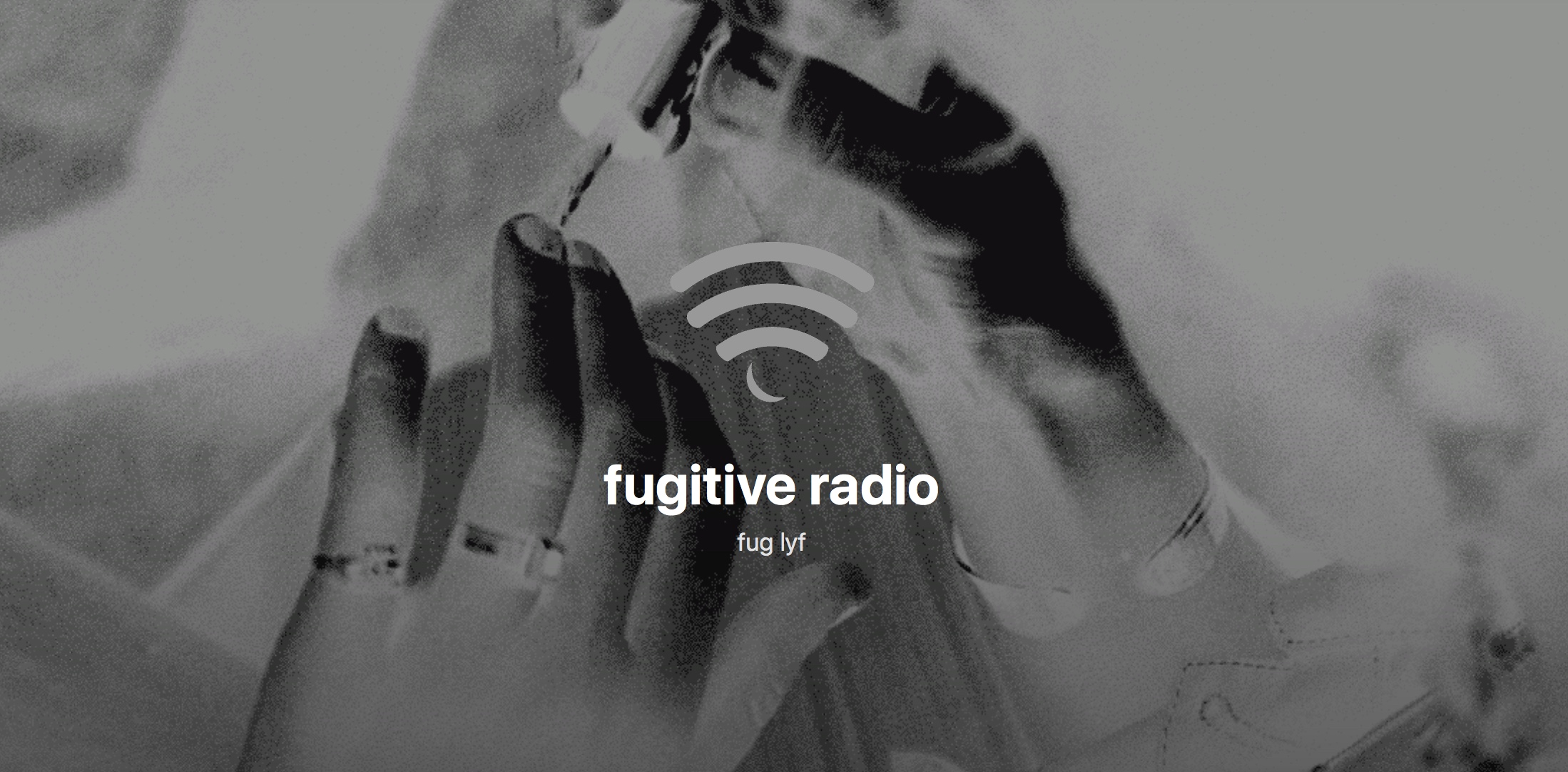
|
fugitive radio (2020 – present), podcast series presented as sound installation fugitive radio is an artistic-research project initiated by Dr Sumugan Sivanesan to raise migrant, queer and anticolonial issues and music in Helsinki and beyond. Beginning in mid-2020, the project has developed over a series of collaborative live events, supported by {openradio}. These have sought to develop decentralised and distributed modes of radio-making such as: radiophonic picnic, audio fanzine, swarm sound system and online club. In States of Emergency, we feature Epiode 11 of the ongoing radio research project fugitive radio: Finance for Future features an interview with the Berlin-based degrowth and climate justice activist and campaigner Tonny Nowshin, calling in from Bangladesh in the build up to the Global Day of Finance Action, 29 October 2021. It also presents conversations with some folks I met at on that day on the steps of Helsinki Parliament: Steven Vanholme and Iciar Montes from EKOenergy, an independent non-profit energy label who help finance renewable energy projects around the world and Olavi Fellman a spokesperson for Fridays for Future Helsinki. It also features voices from those involved in actions around the world on that day and in the opening days of the UN climate conference, COP26, in Glasgow in November 2021 — notably Samoan activist Brianna Fruean and the Koala Kollektiv. Sivanesan initiated the radio research project fugitive radio in 2020 while on a year-long artist residency in Helsinki. The fugitive frequency podcast broadcasts on the first Tuesday of every month on CoLaboRadio, via Freie Radios – Berlin Brandenburg. The online club RUB opens a room on SonoBus on the night of the new moon during the European winter, 2021–2022. fugitive radio was showcased at Pixelache Festival #Burn____ (2021), and has been generously supported by the Kone Foundation (2020–2021). In 2022, fugitive radio will continue as a para-institutional format, adapting to different organisational structures such as the artist association, artist residency, activist camp and artspace. |
Sumugan Sivanesan (Lives and works in Sydney, Australia and Berlin, Germany.) Sumugan Sivanesan is an anti-disciplinary artist, researcher and writer, and a transcultural radical. His eclectic practice is concerned with the legacies of colonialism, the experience of cultural differences, and the diaspora. Often working collaboratively his interests span migrant histories and minority politics, activist media, artist infrastructures, more-than-human rights and multispecies politics, queer theory, Tamil diaspora studies and anticolonialism. In Berlin, he organizes with Black Earth, a collective who address interacting issues of race, gender, colonialism, and climate justice. Sivanesan earned a PhD from the Transforming Cultures research center at the University of Technology Sydney, Australia (2014). He was a post-doctoral researcher at the Institute for English and American Studies (Cultural Studies), University of Potsdam (2016) supported by the DAAD. Sivanesan has produced events and exhibitions at: Pixelache Festival #BURN____2021 (Helsinki); nadine laboratory for contemporary arts (Brussels 2020); Akademie Schloss Solitude (2020); Tehai (Dhaka 2020); Frame Contemporary Art (Helsinki 2019); The Floating University Berlin (2019); EX-EMBASSY (Berlin 2018); BE.BoP 2018: Black Europe Body Politics, Maxim Gorki Theatre (Berlin, 2018); Nida Art Colony Inter-format Symposium (Lithuania, 2018); Art Laboratory Berlin (2015); ZK/U Centre for Art and Urbanistics, Berlin (2015, 2014); Perth Institute of Contemporary Arts (2014); The Reading Room (Bangkok 2013); Performance Space (Sydney 2013); MOMENTUM Berlin (2012); Yautepec Gallery (Mexico City 2011); 4A Centre for Contemporary Asian Art (Sydney 2011, 2010); MOMENTUM Sydney (2010), amongst many others. Sivanesan was a member of the experimental documentary collective theweathergroup_U who formed for the Biennale of Sydney 2008. He was active with media/art gang boat-people.org who engaged Australian publics in issues of borders, race and nationalism between 2002 and 2014. |
Click HERE to see the prequel to STATES of EMERGENCY > >
![]()
SUPPORTED BY:
 |
 |
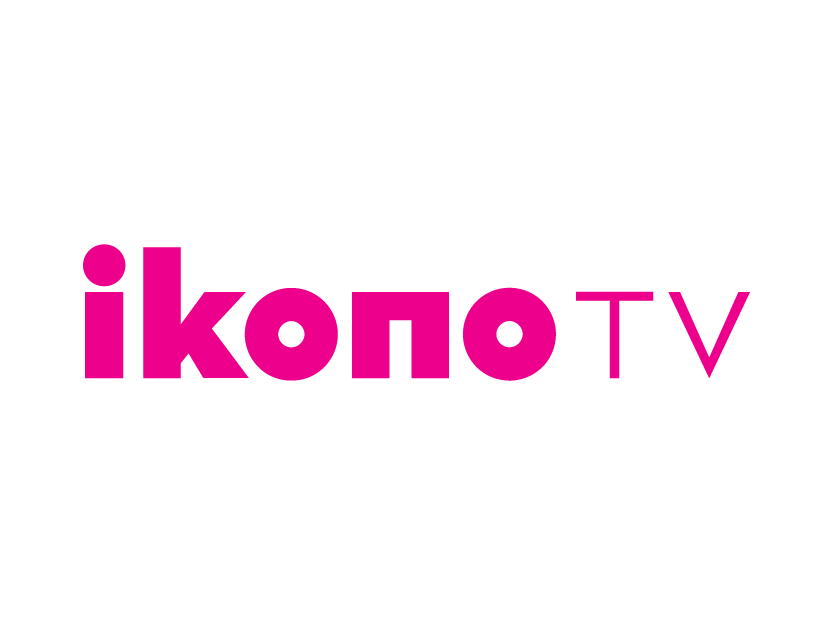 |


 Back to Homepage
Back to Homepage



